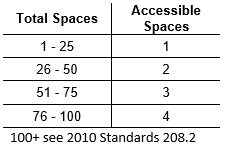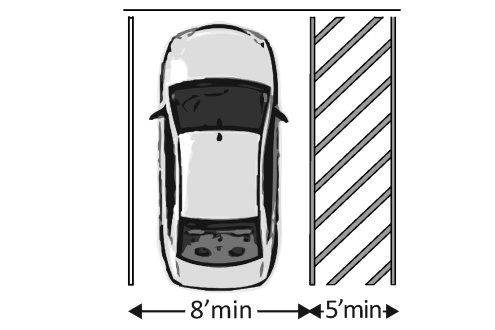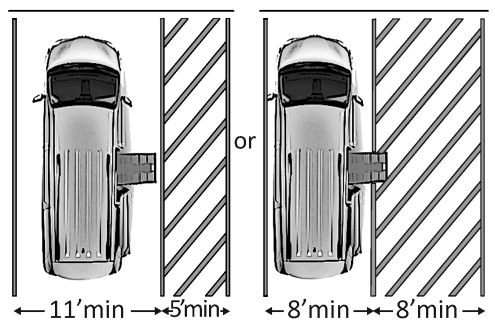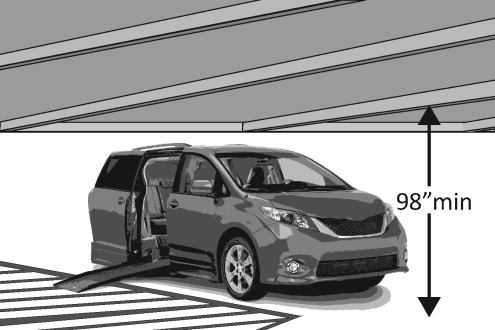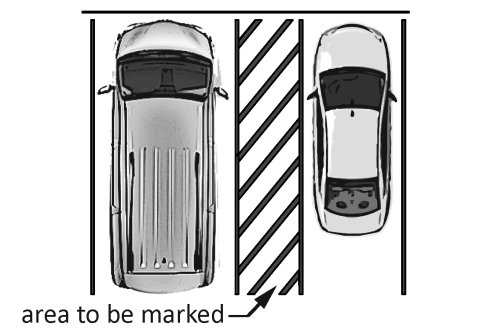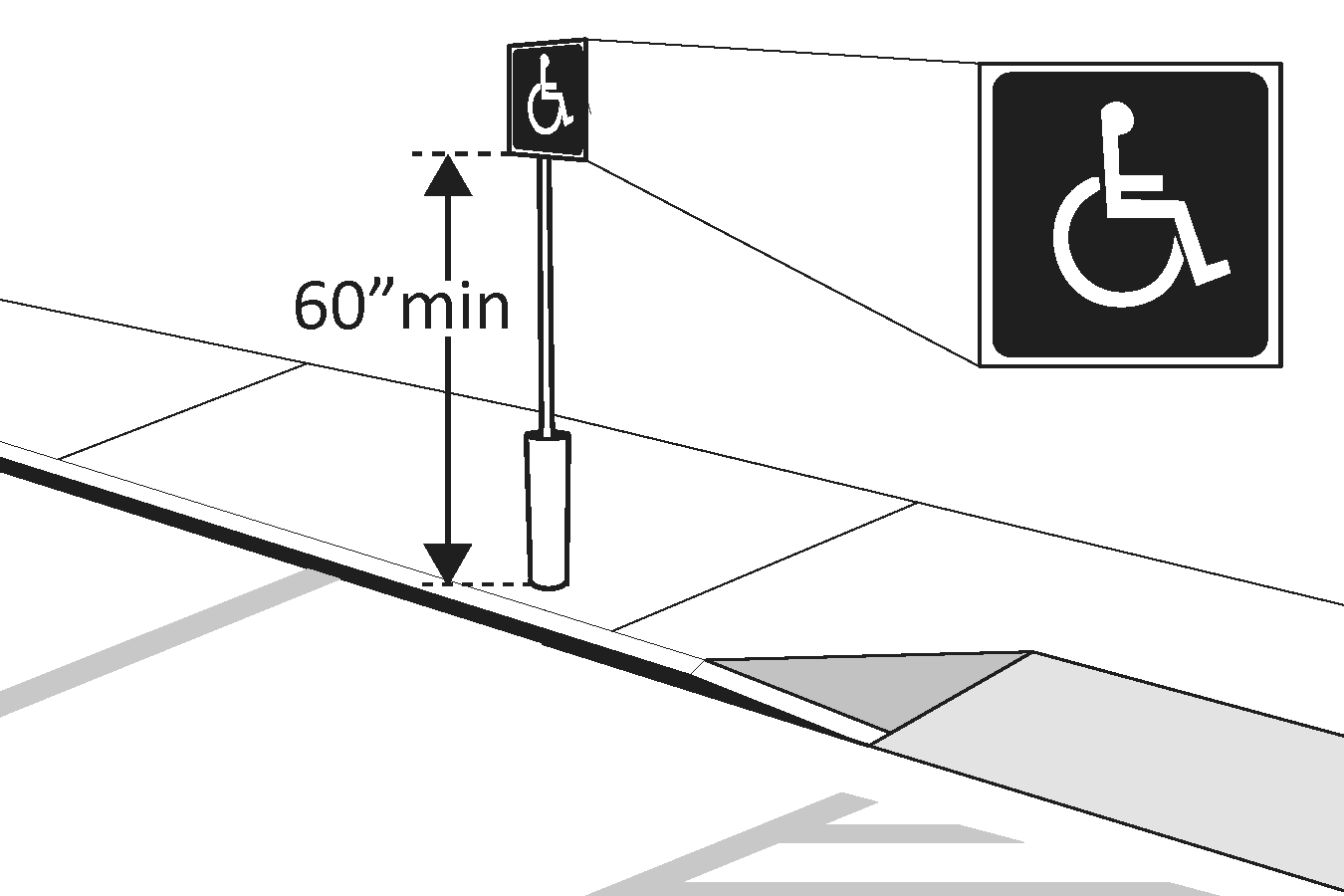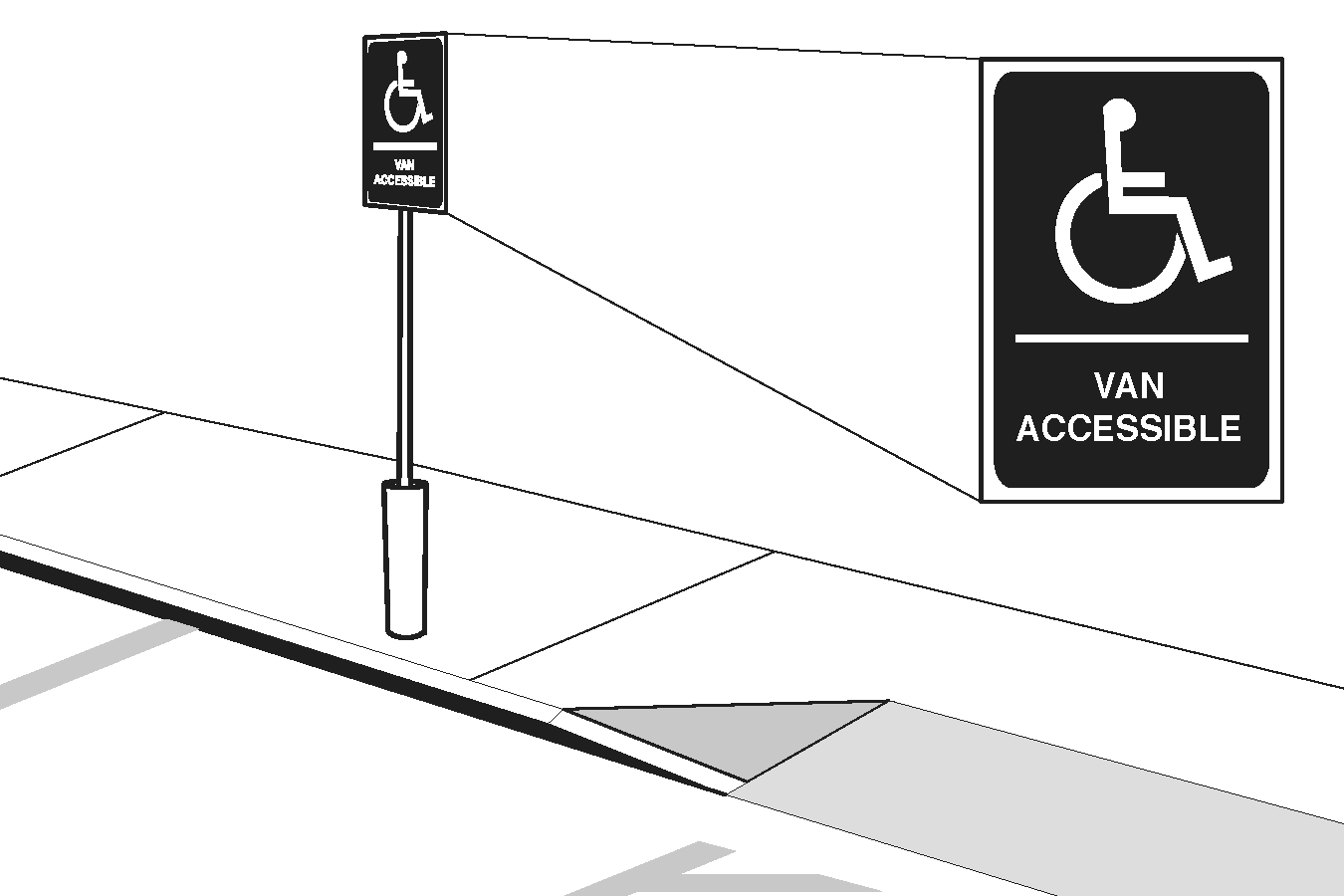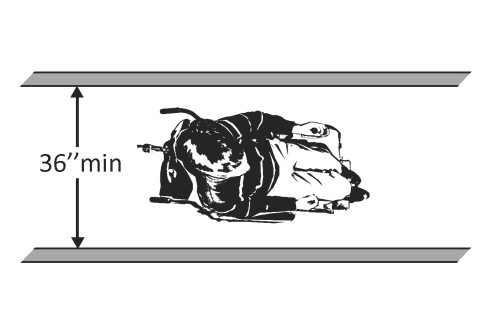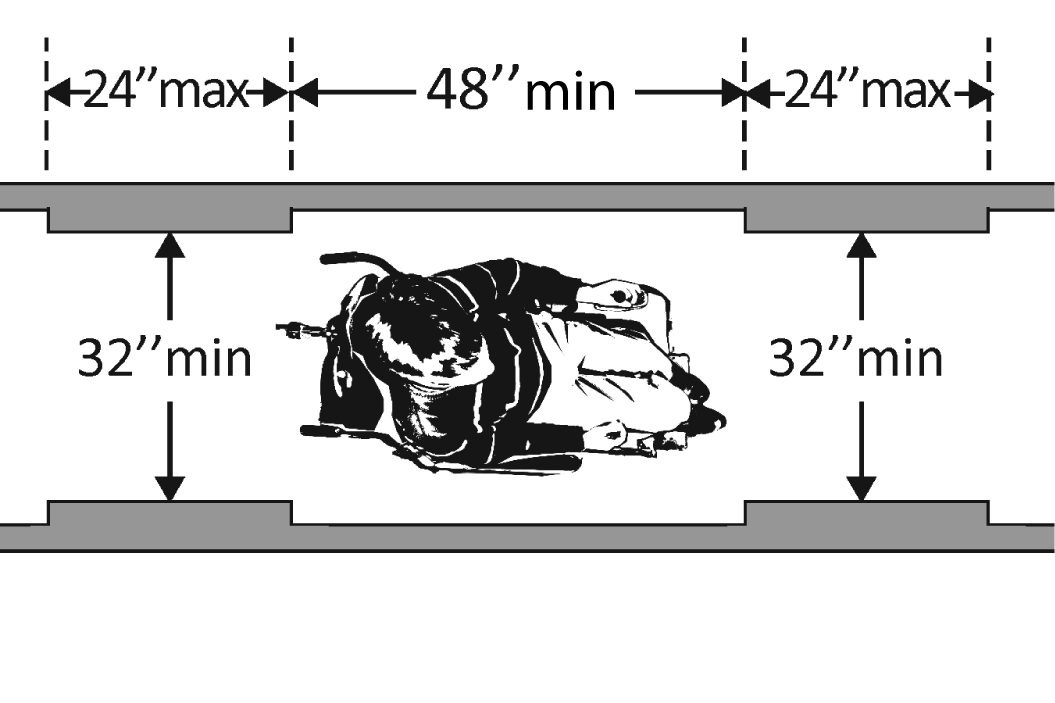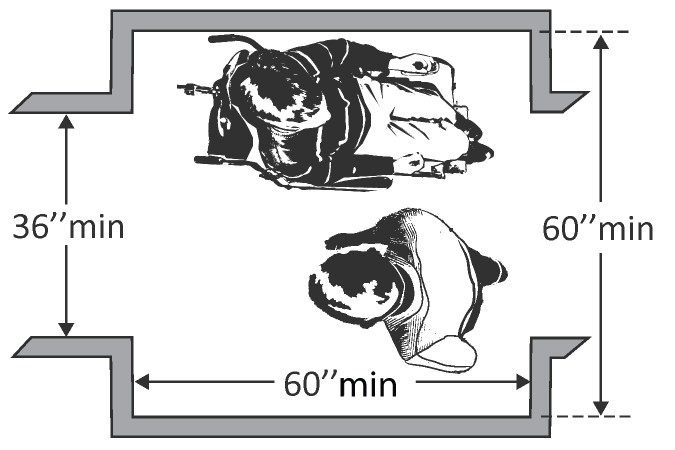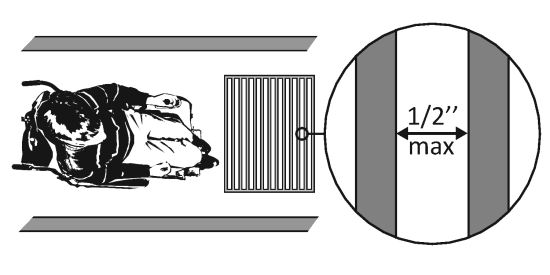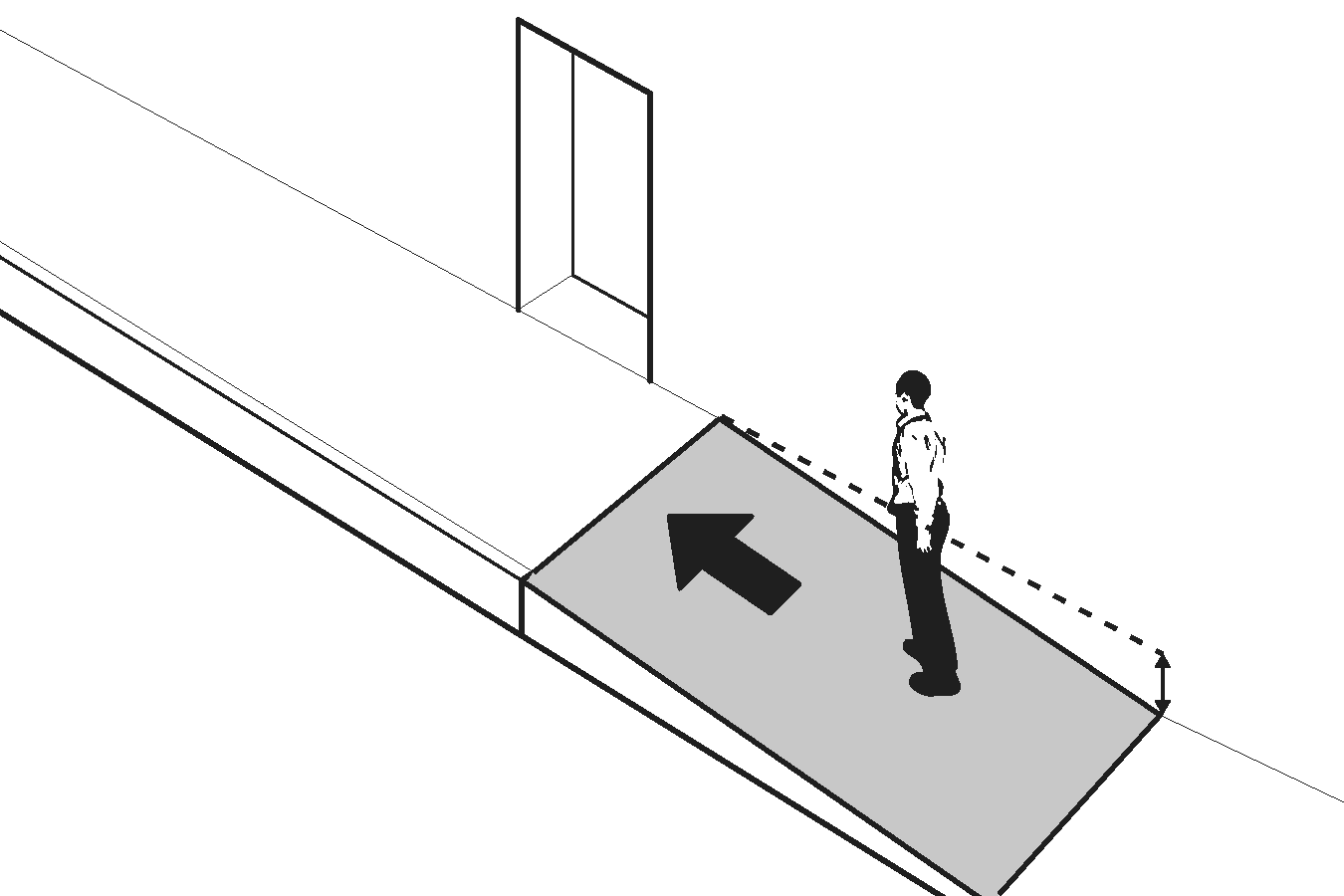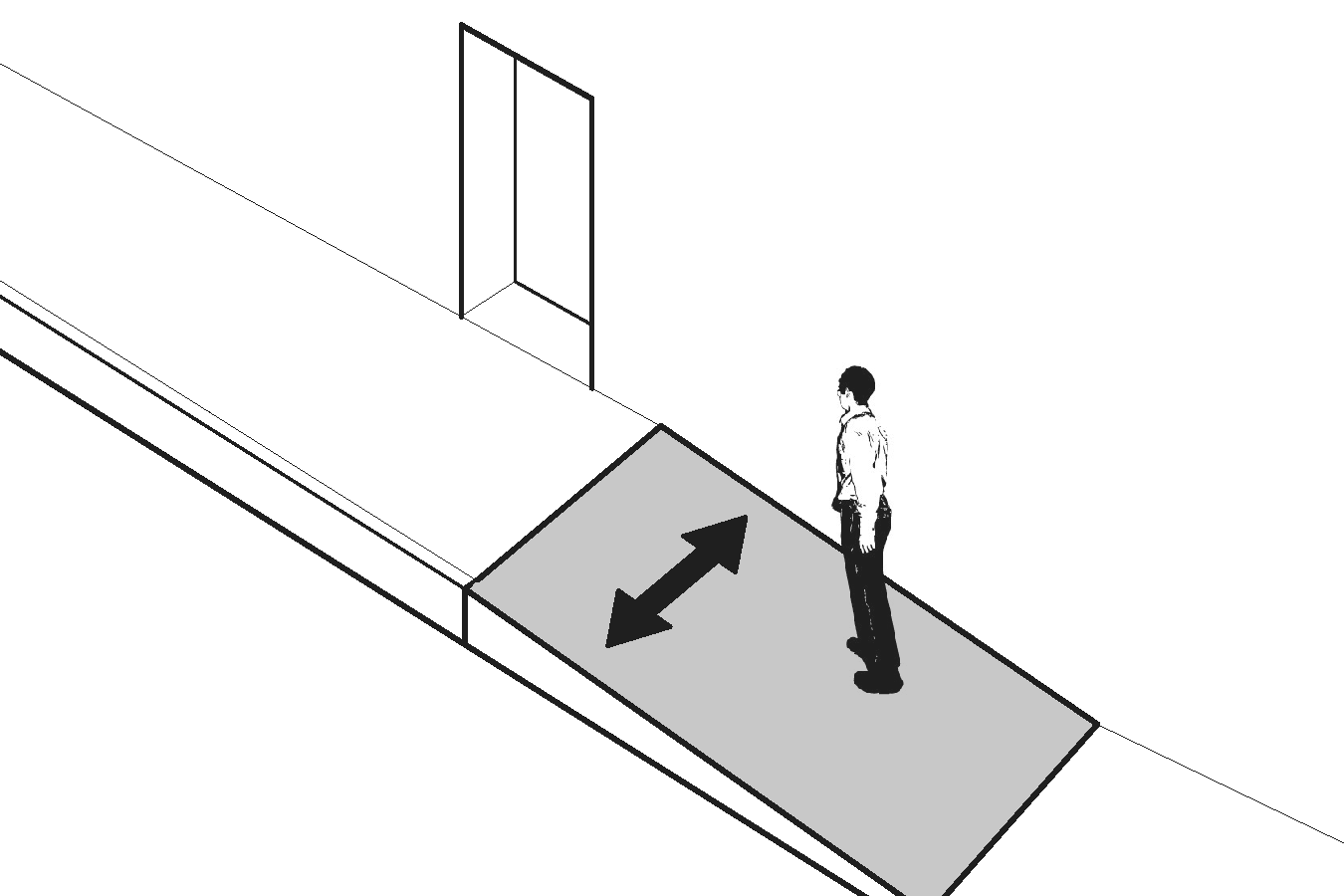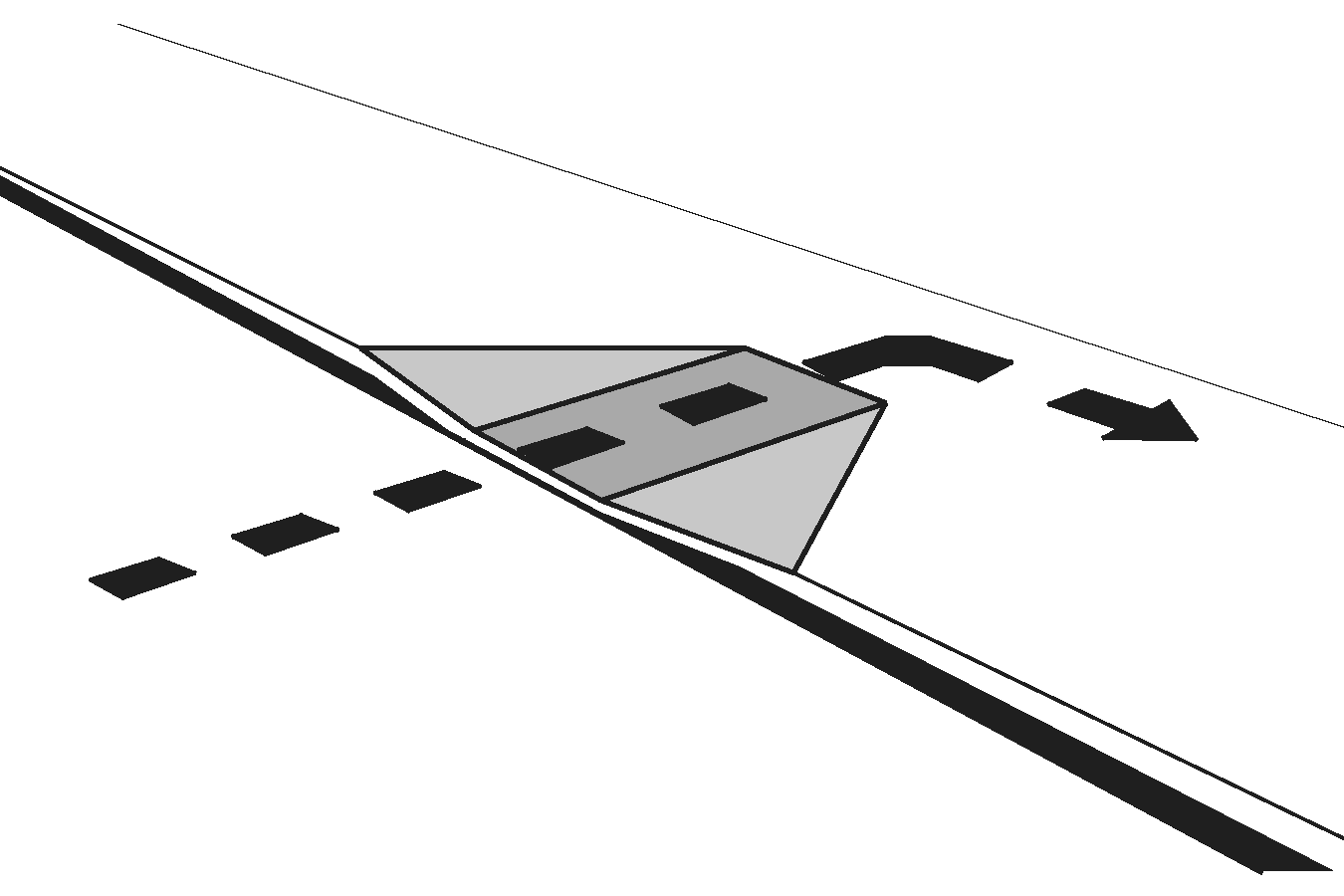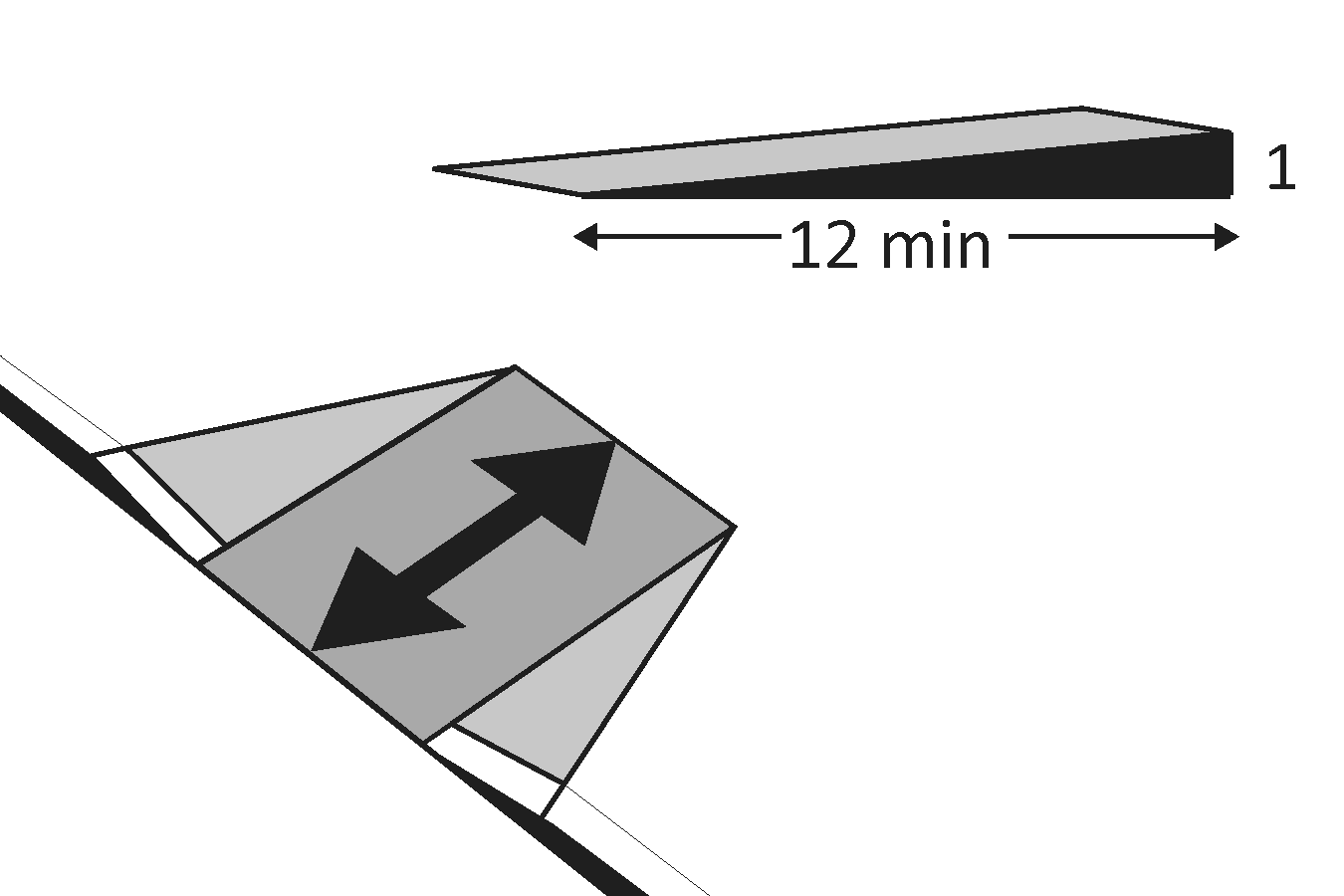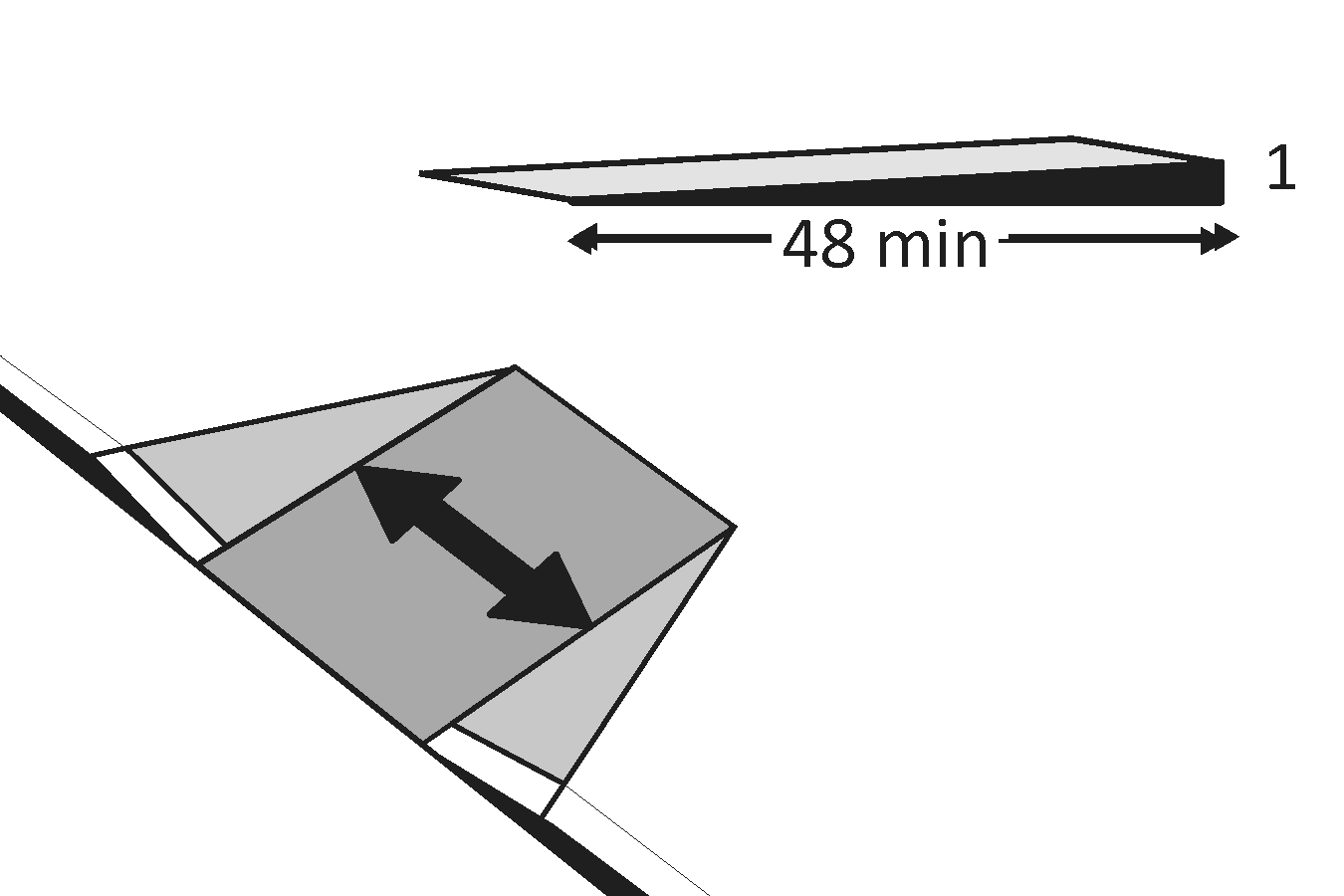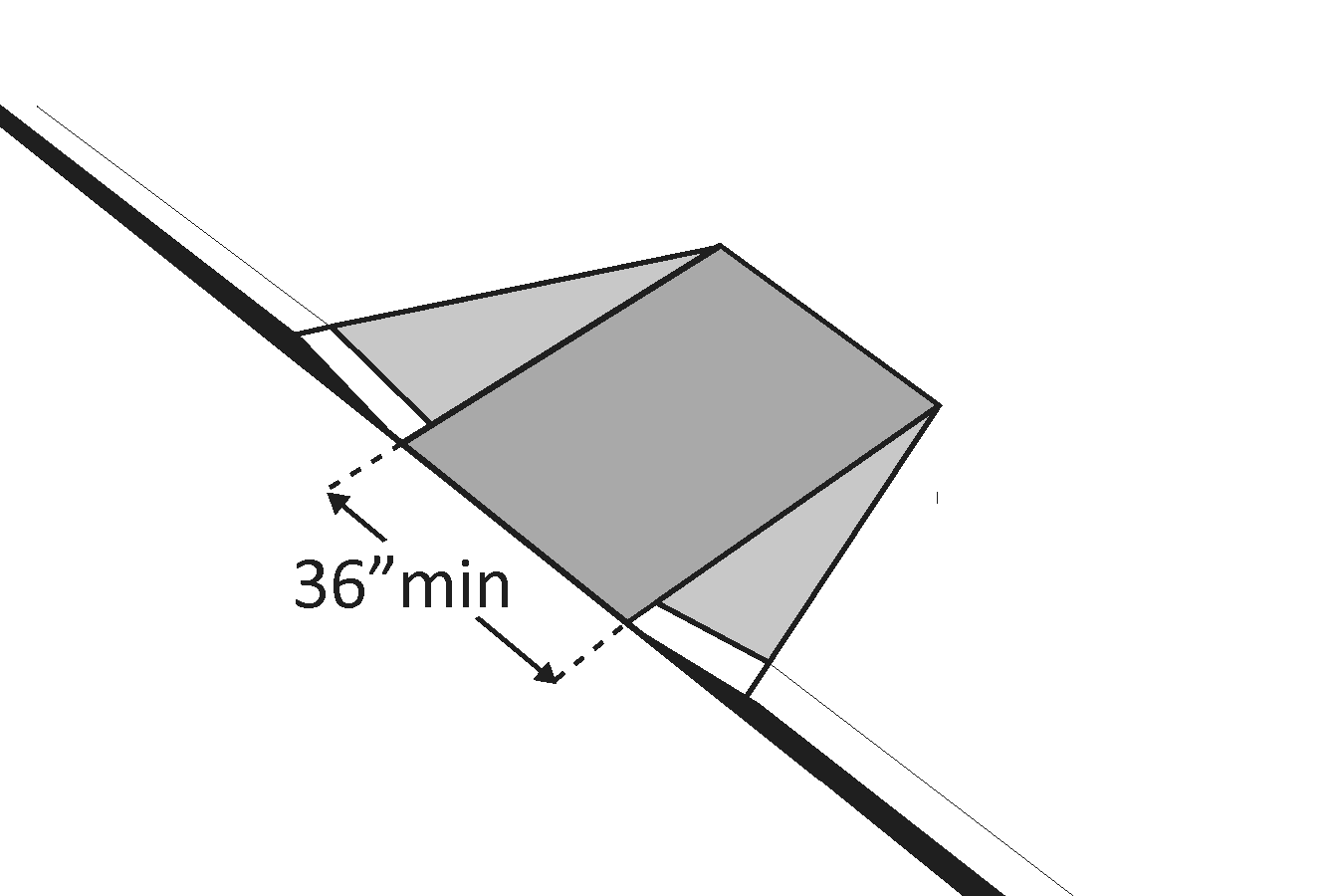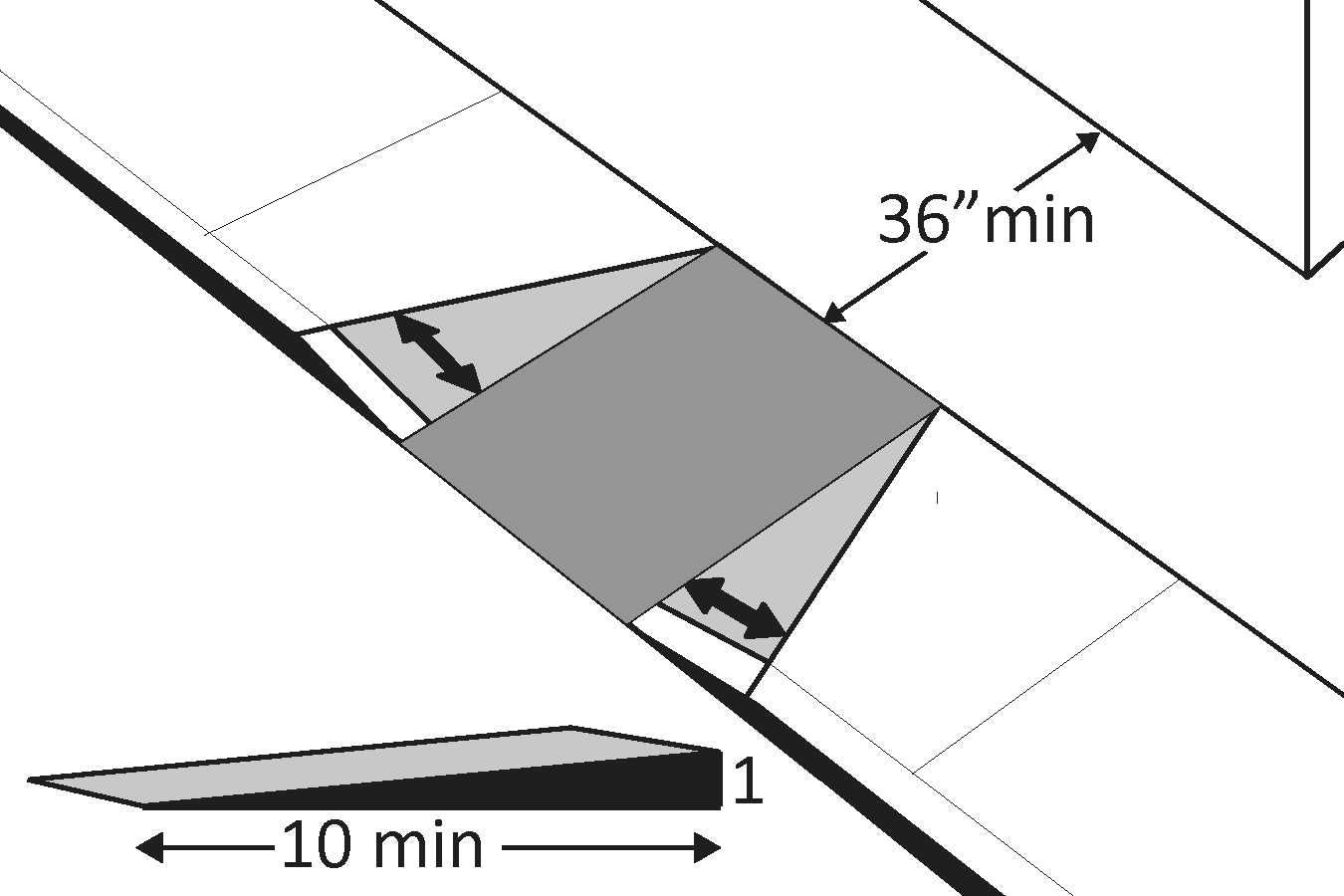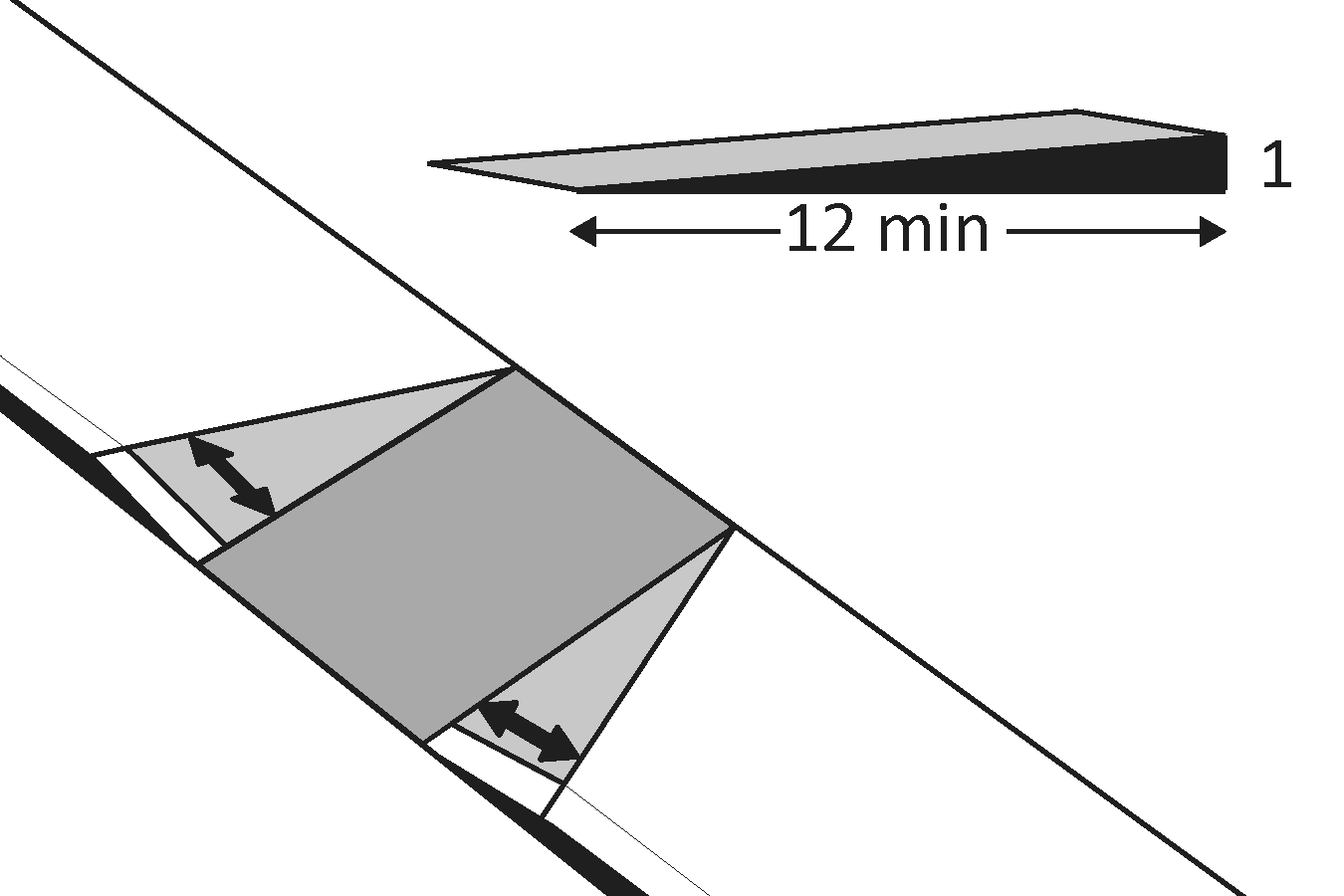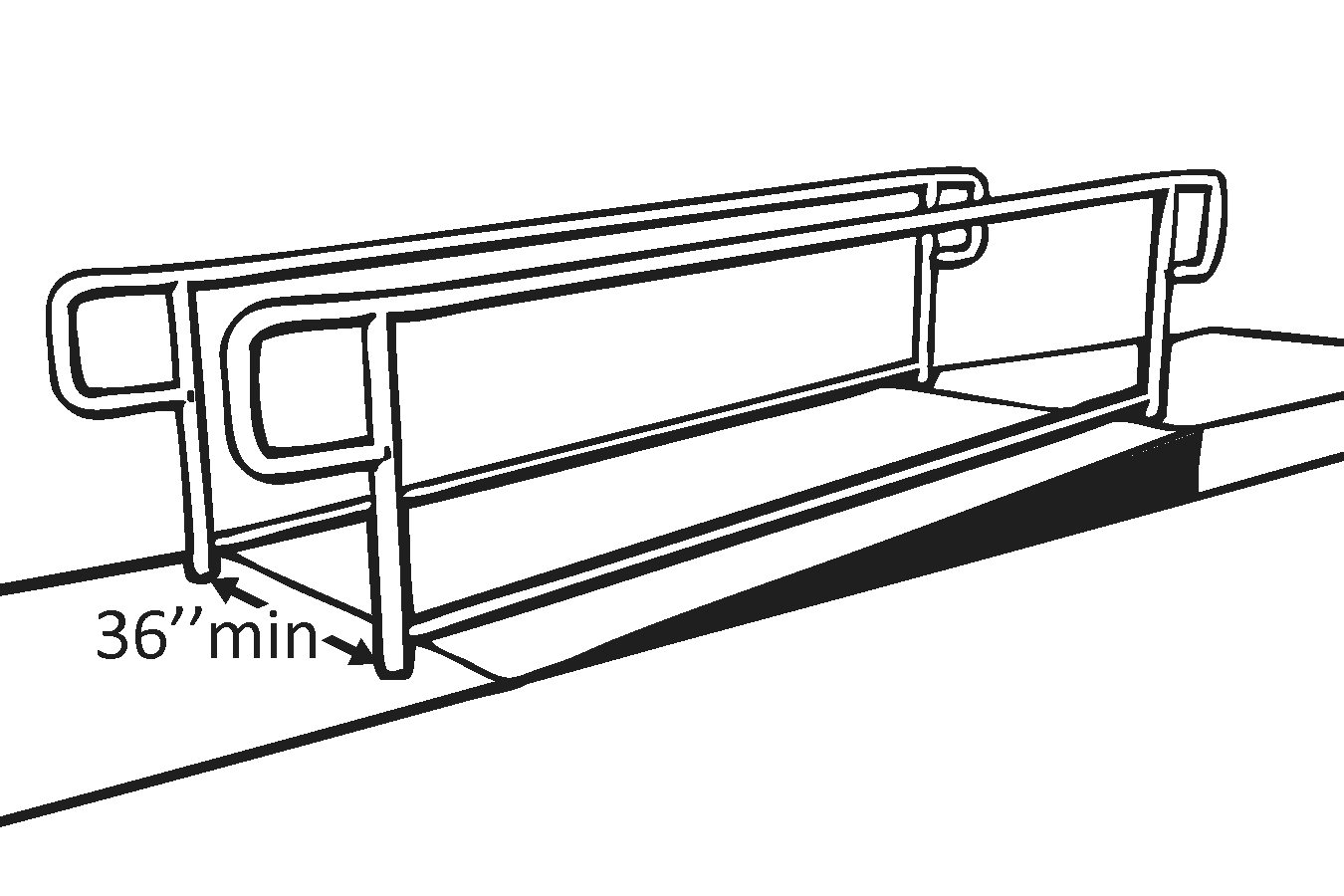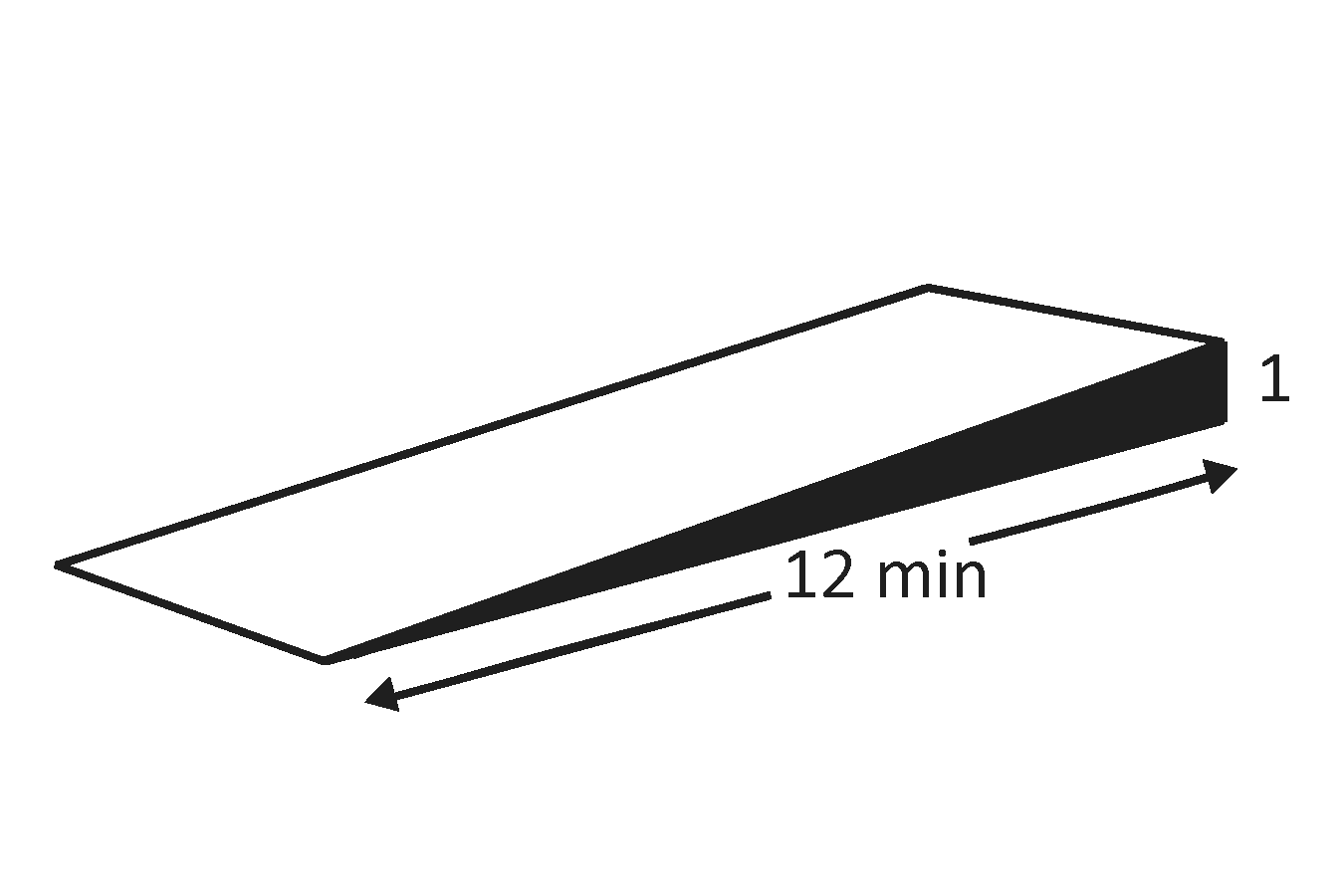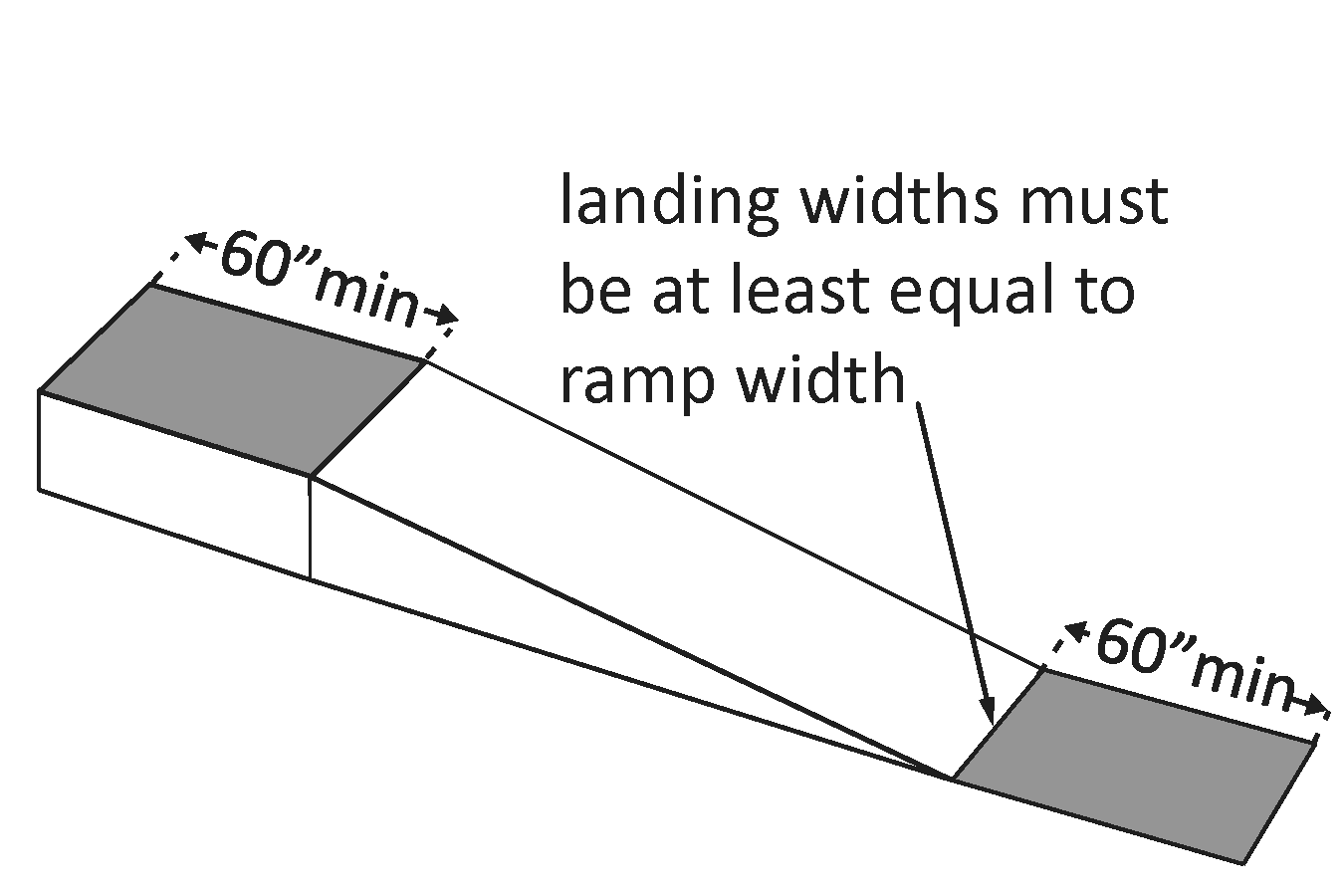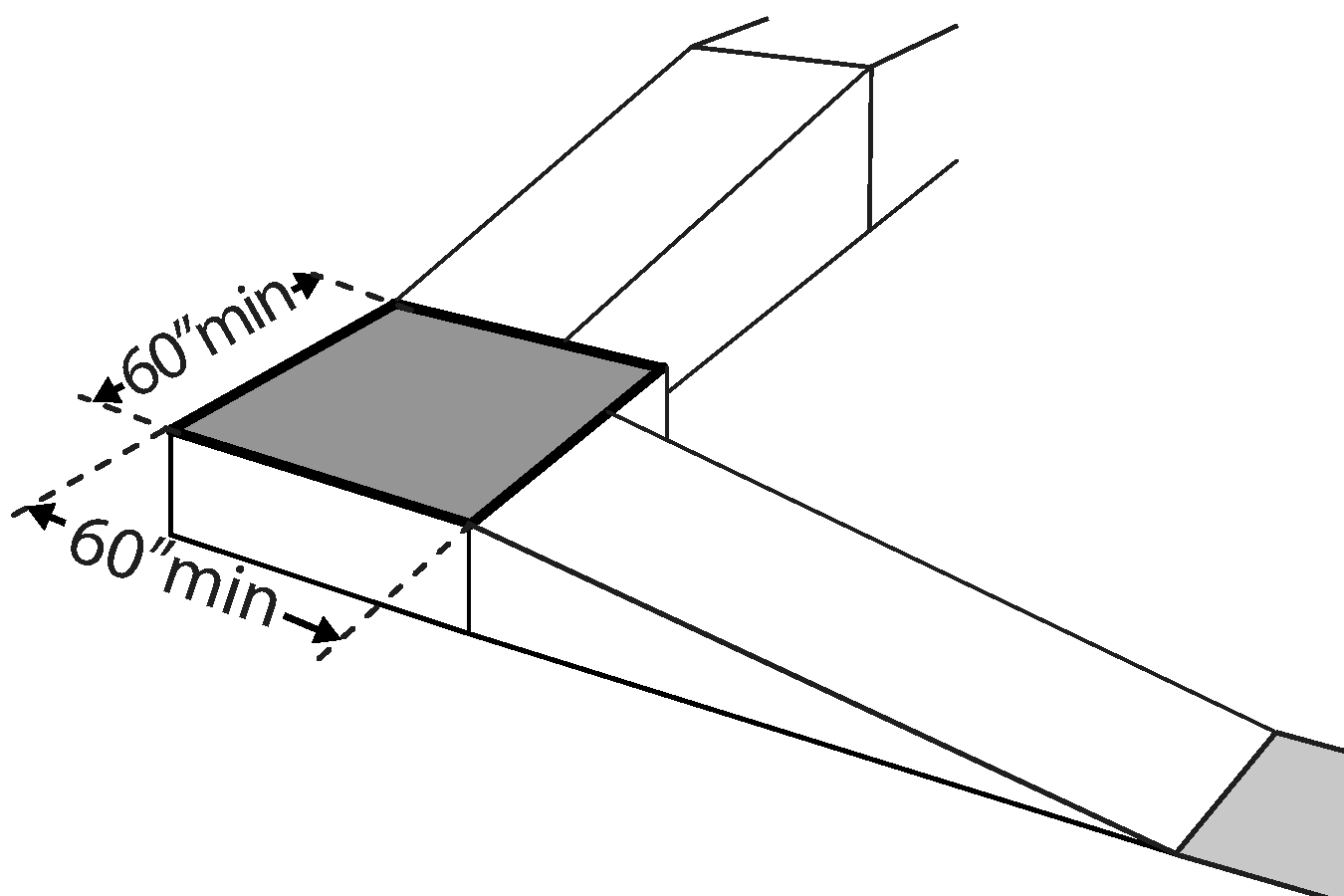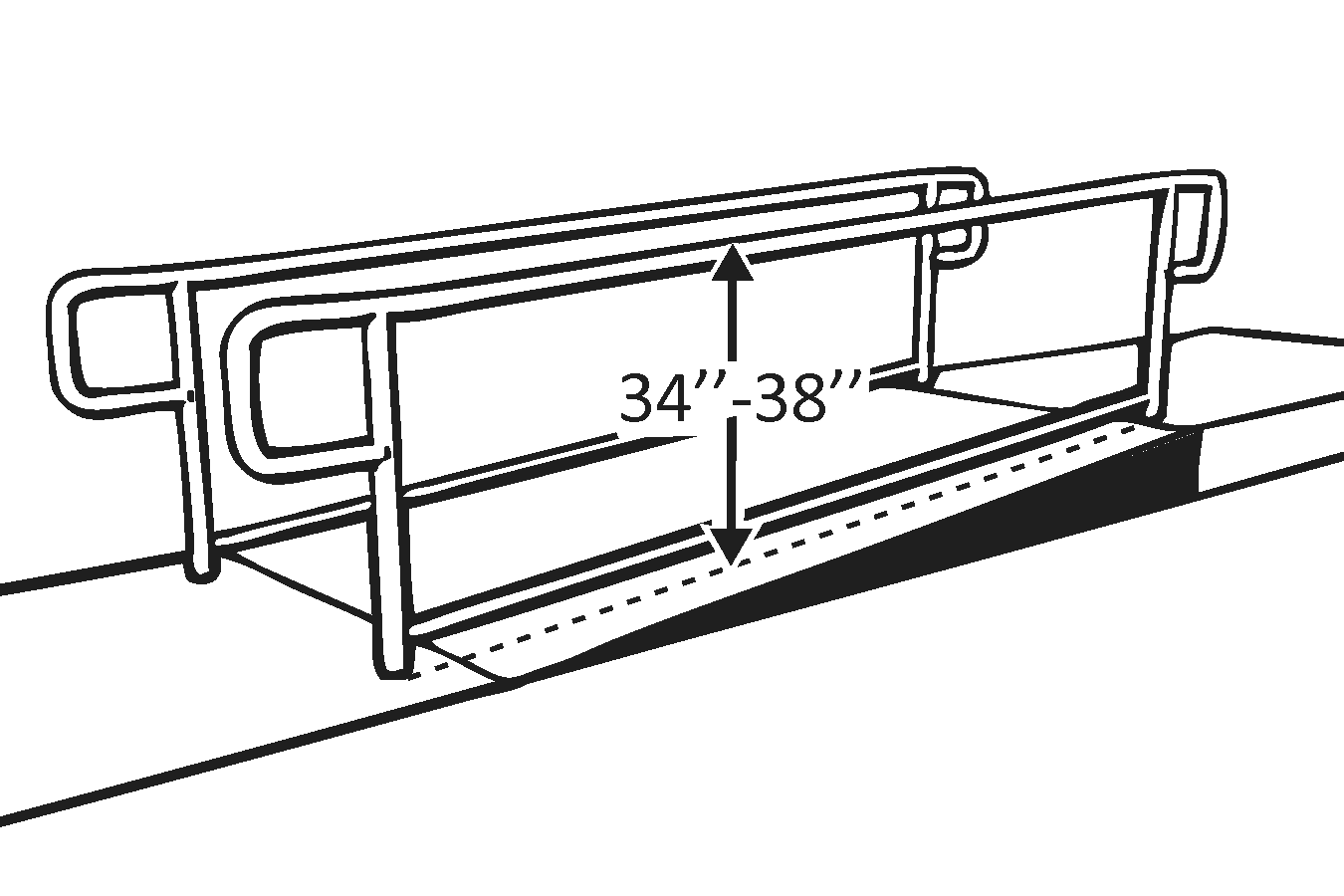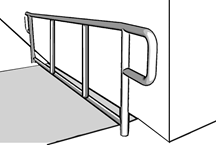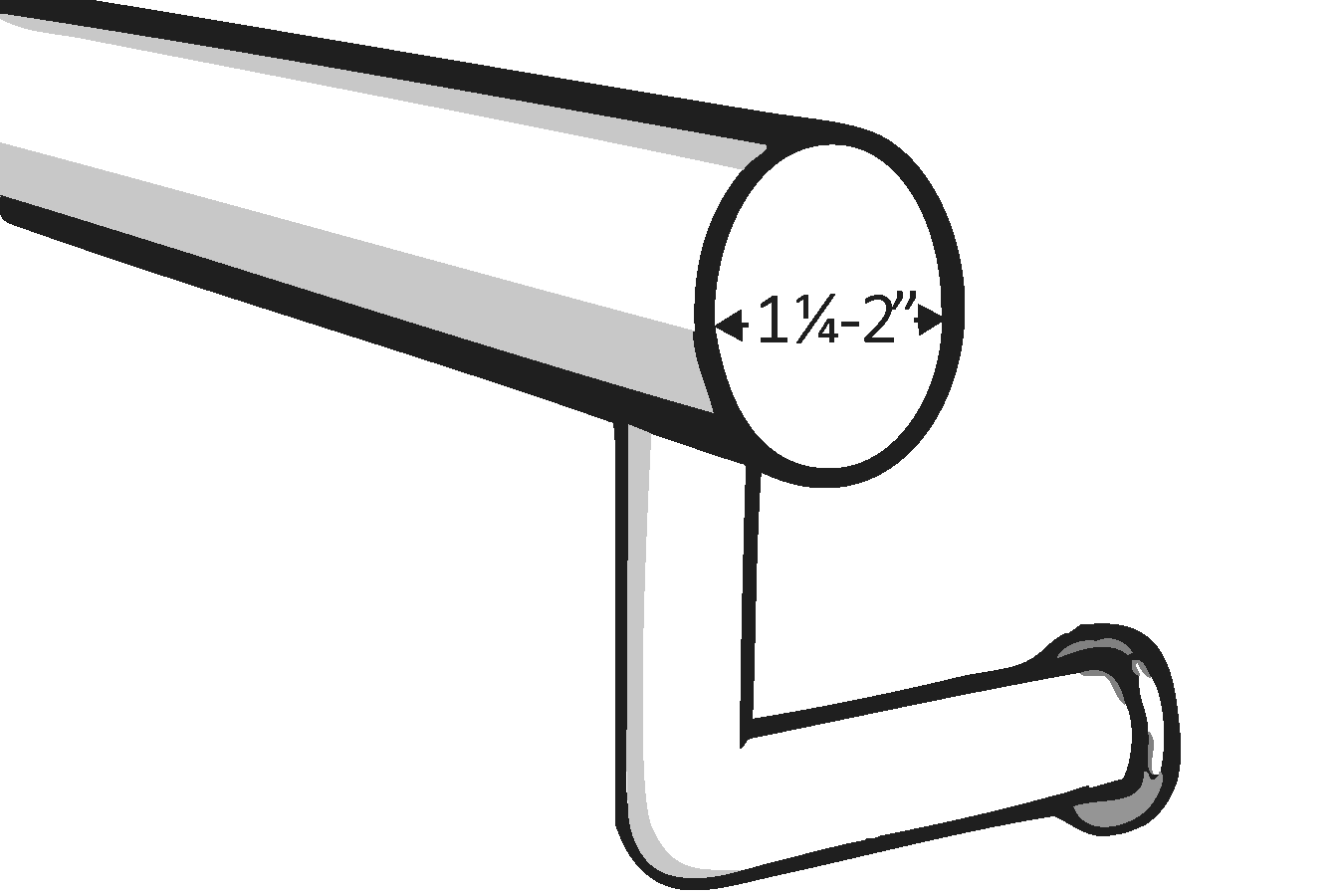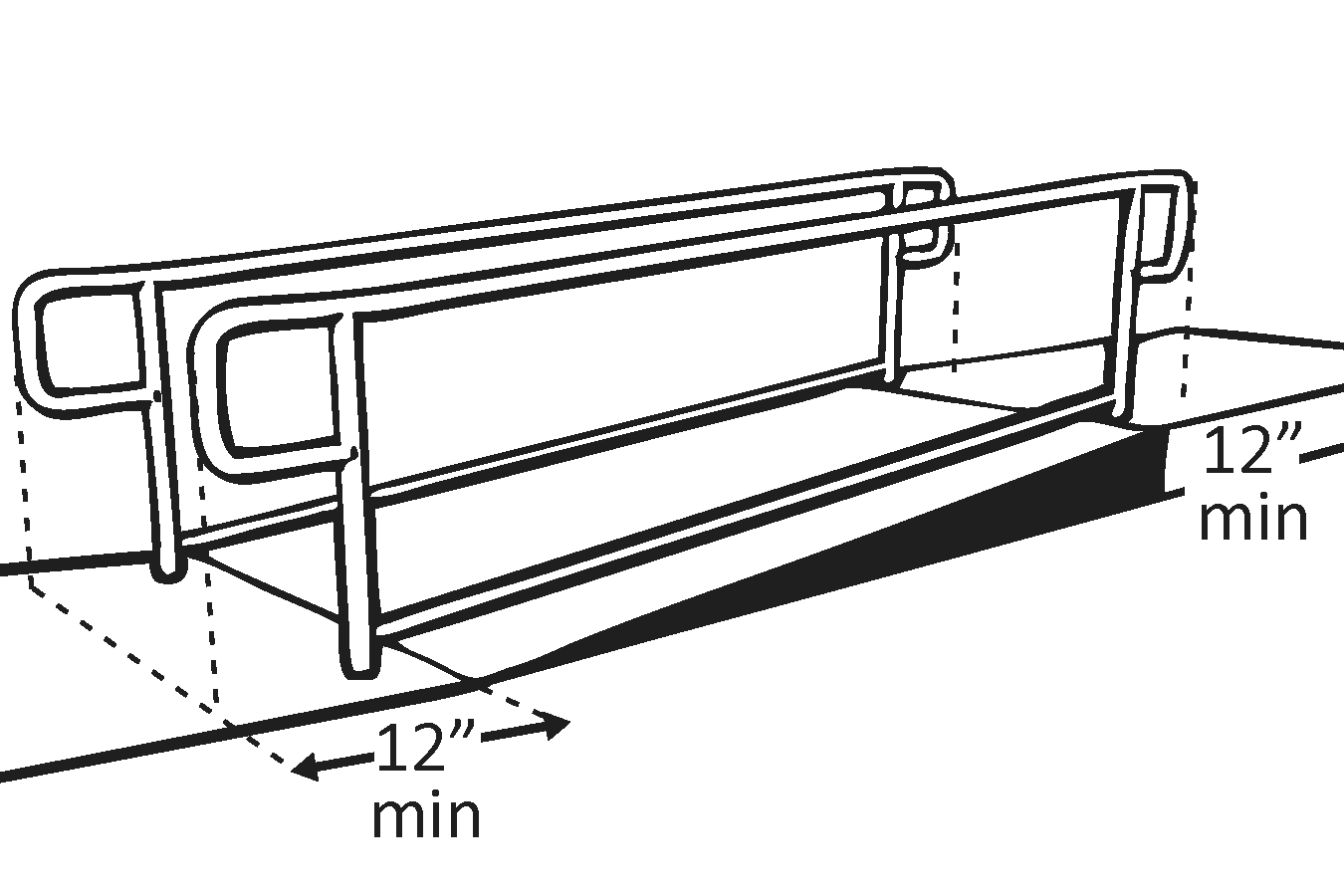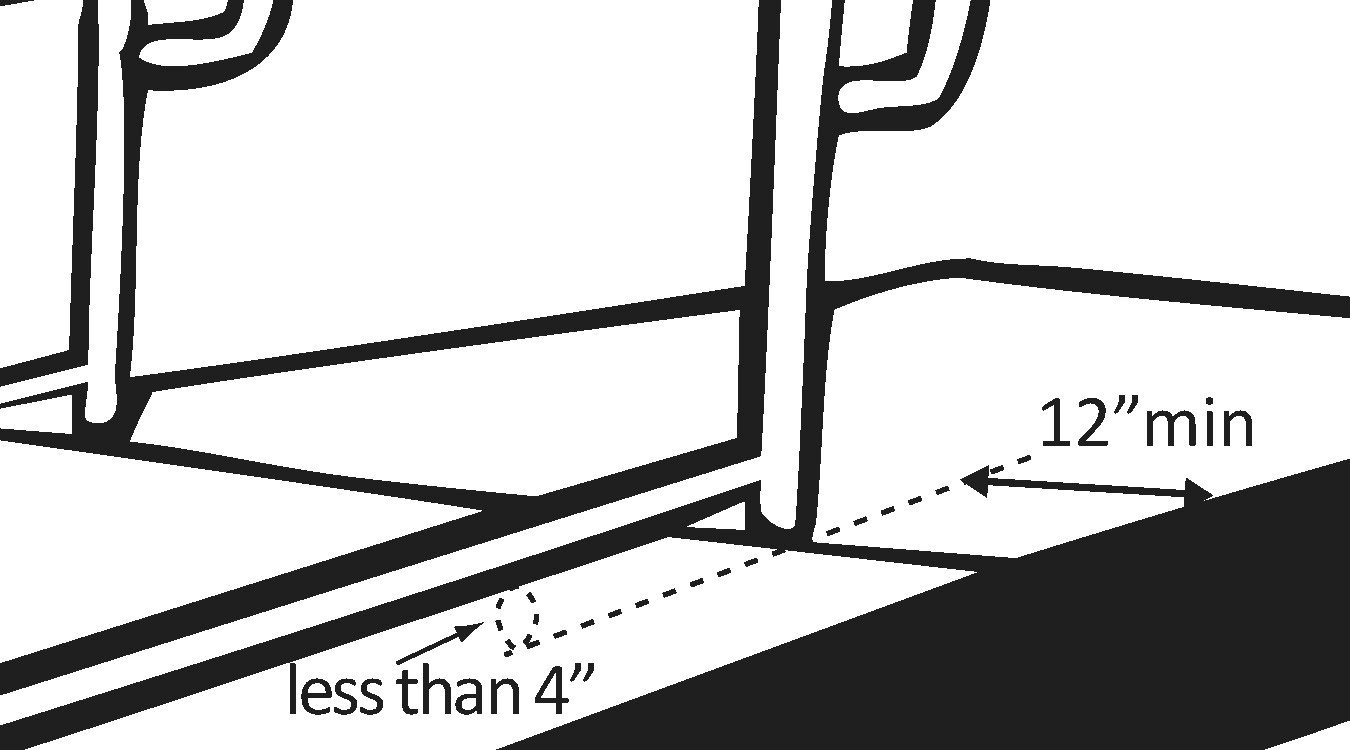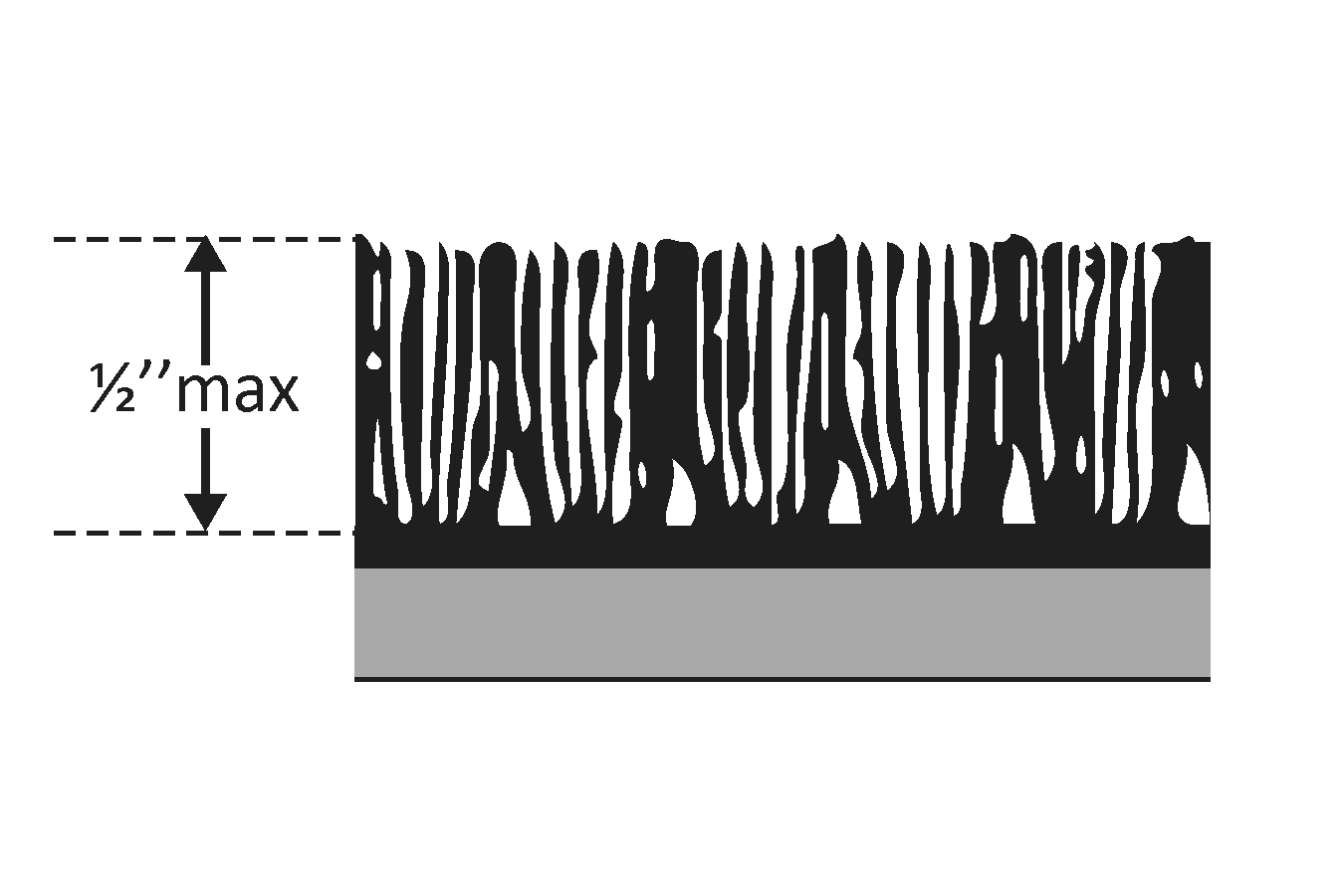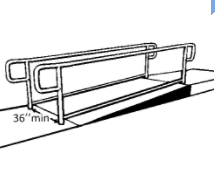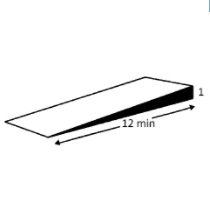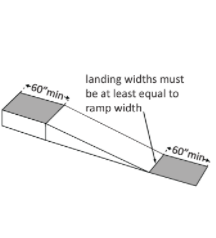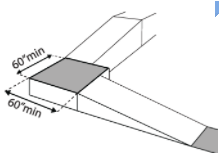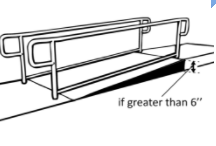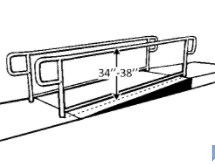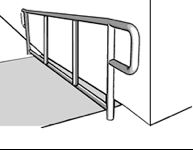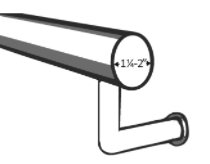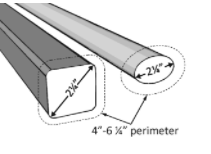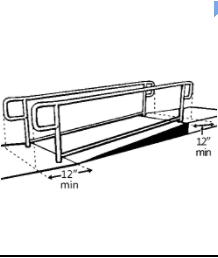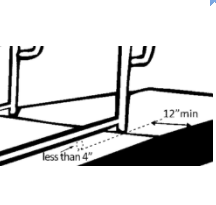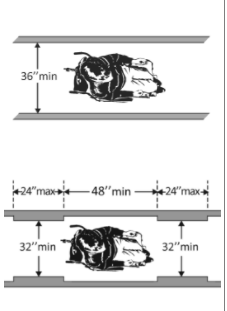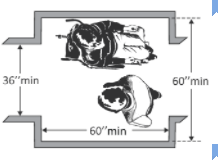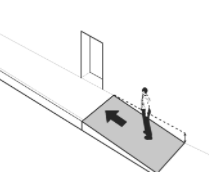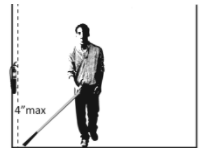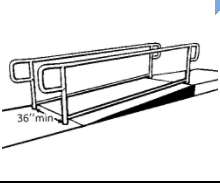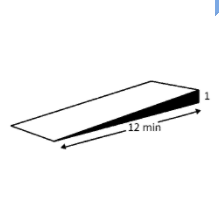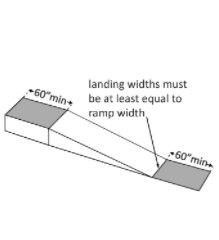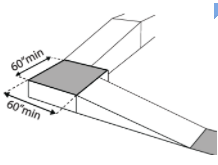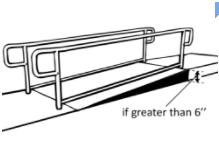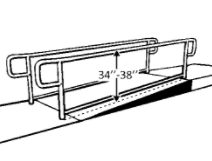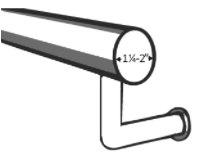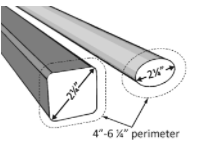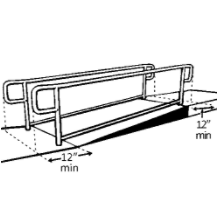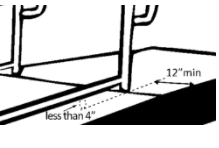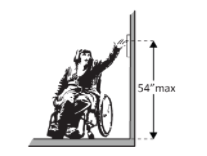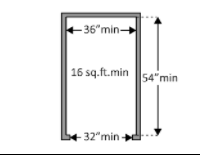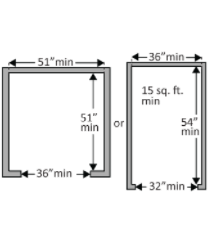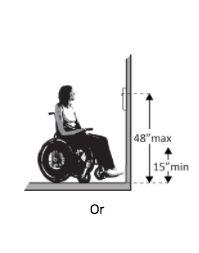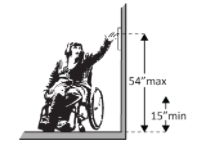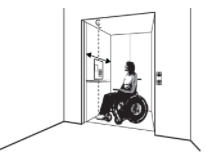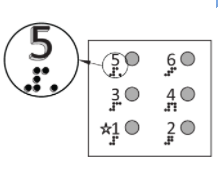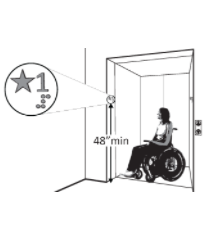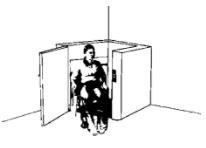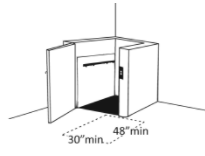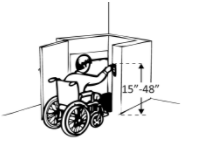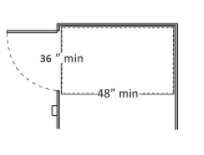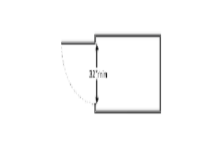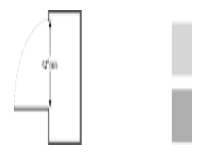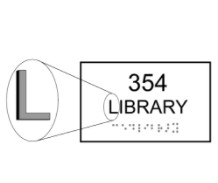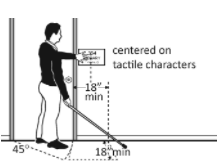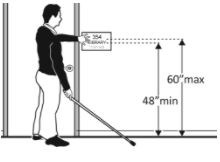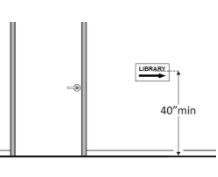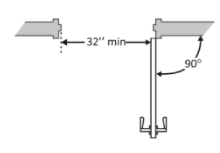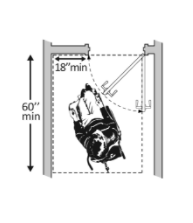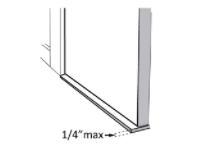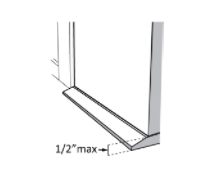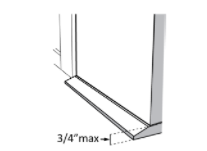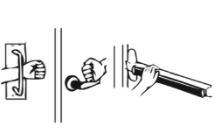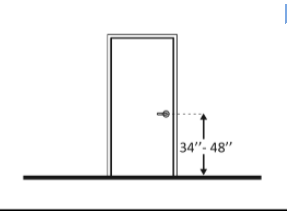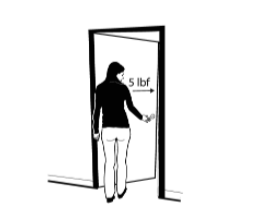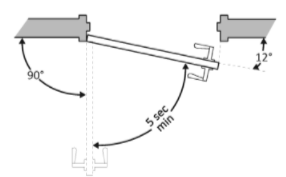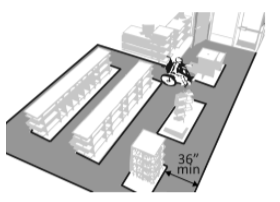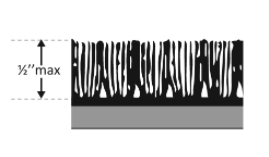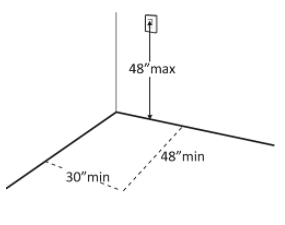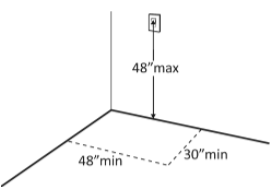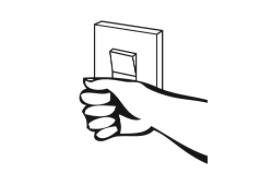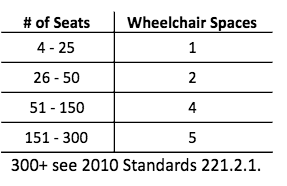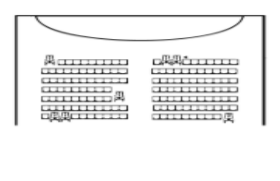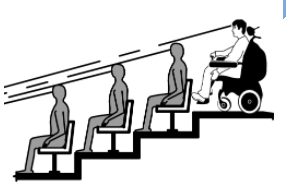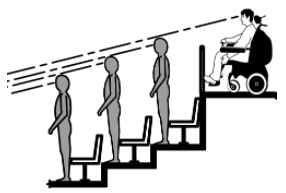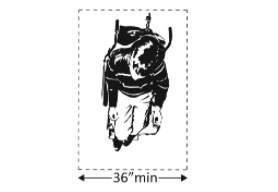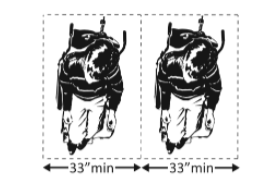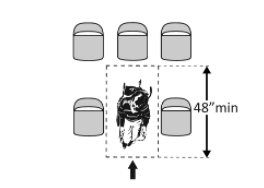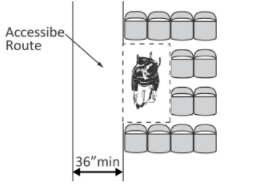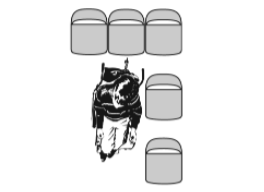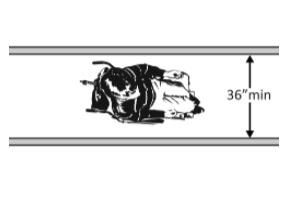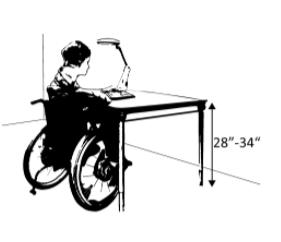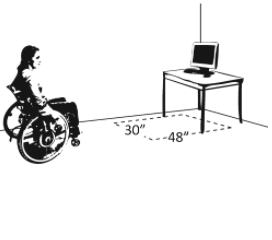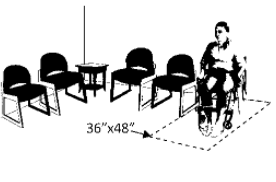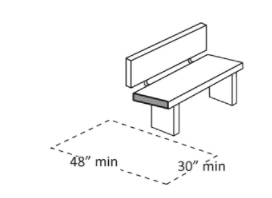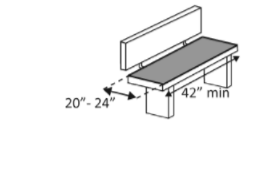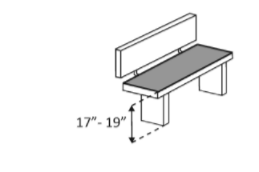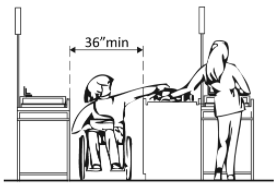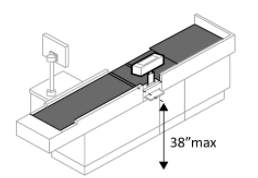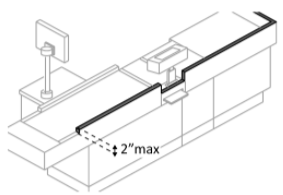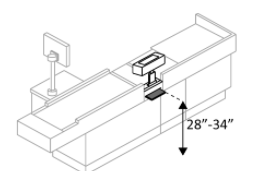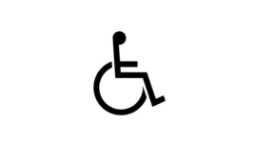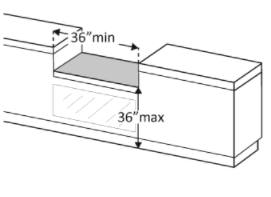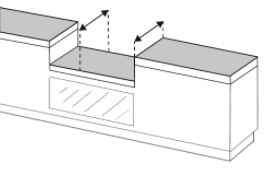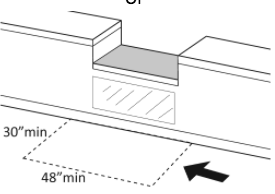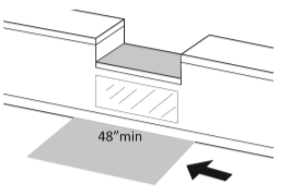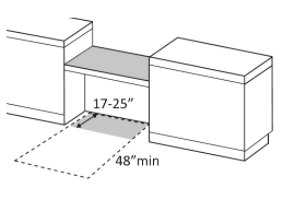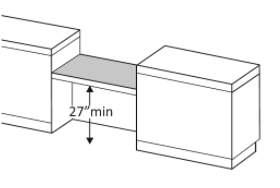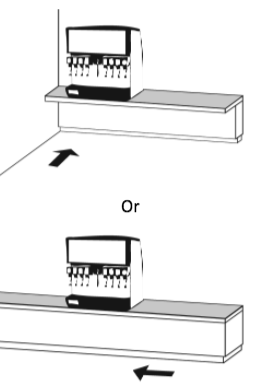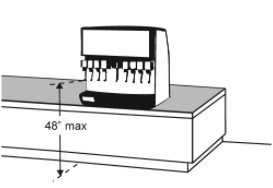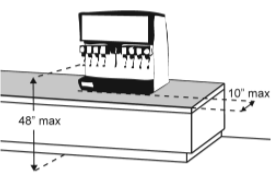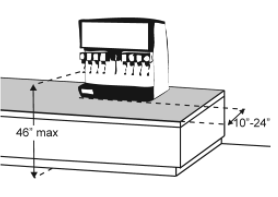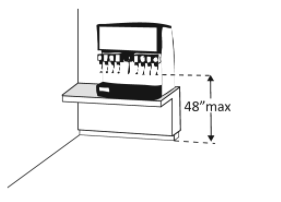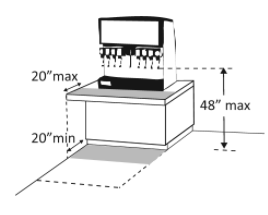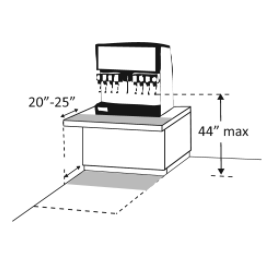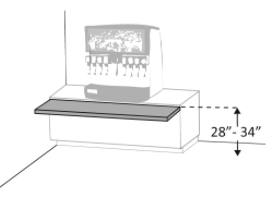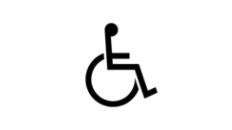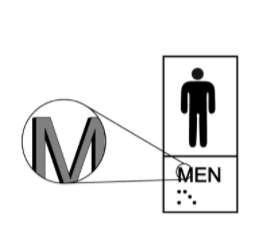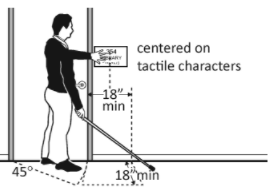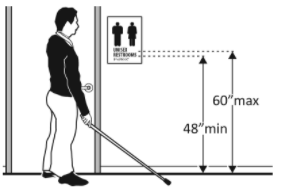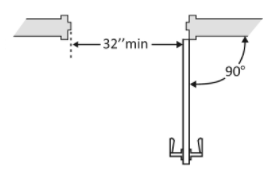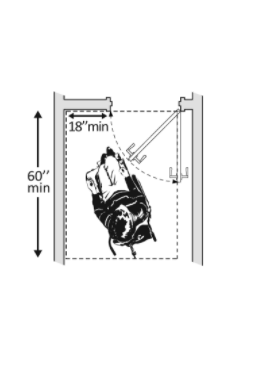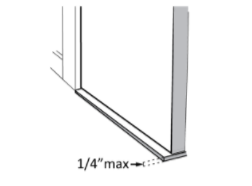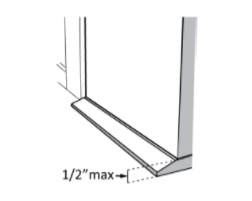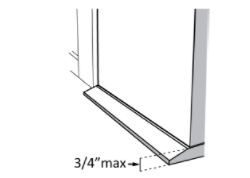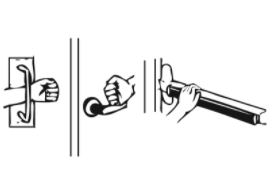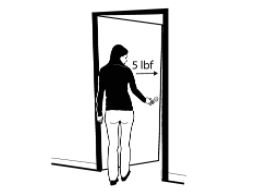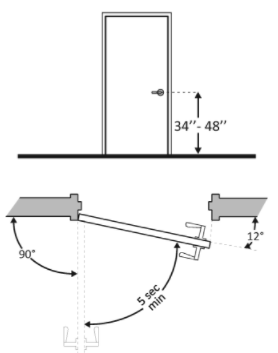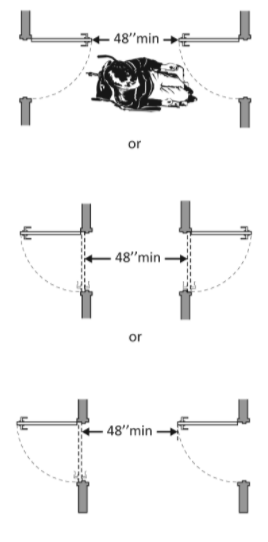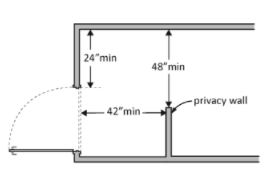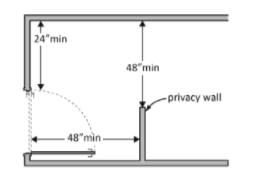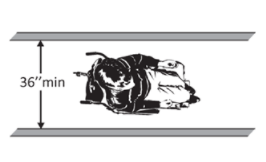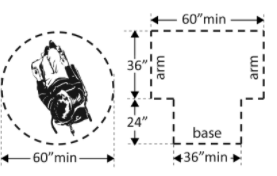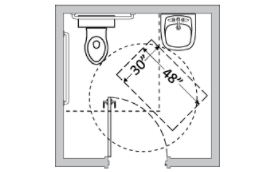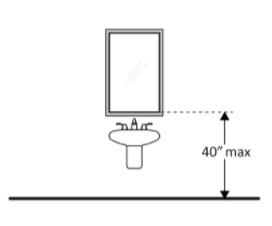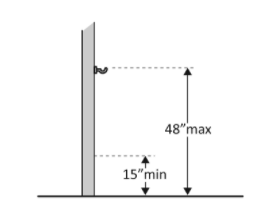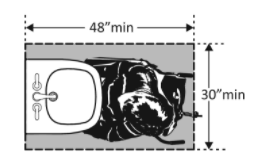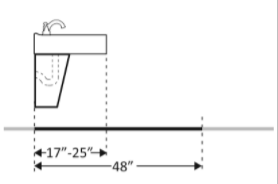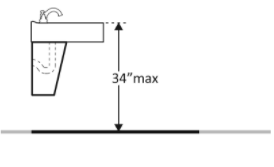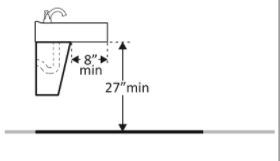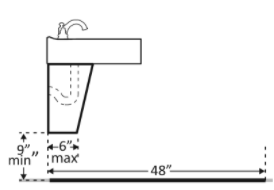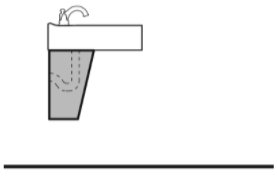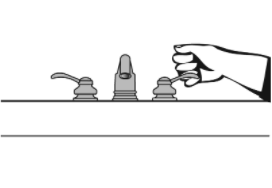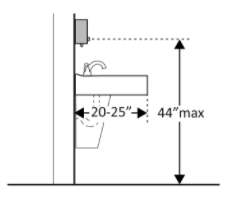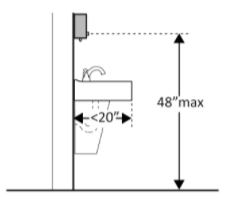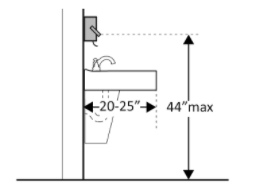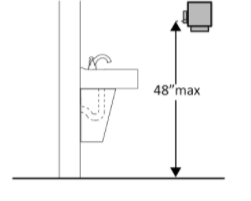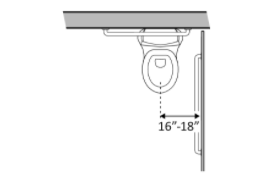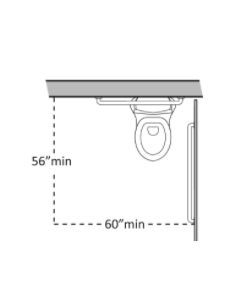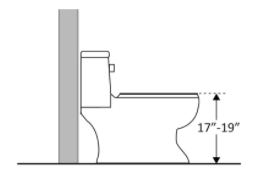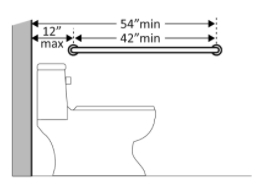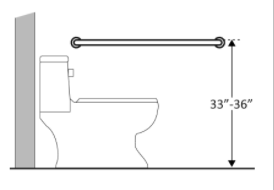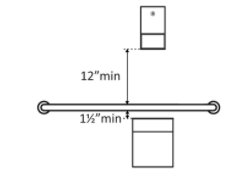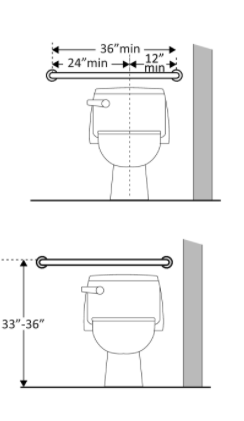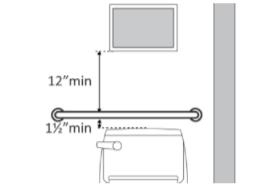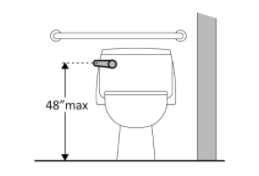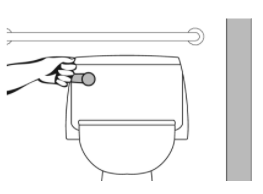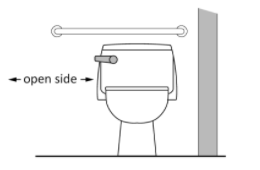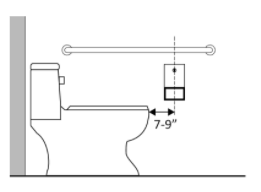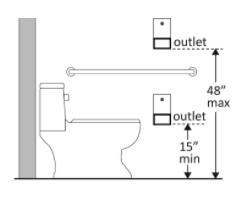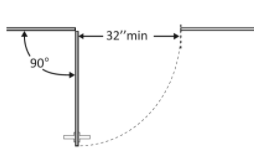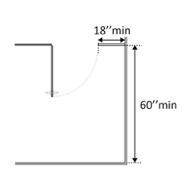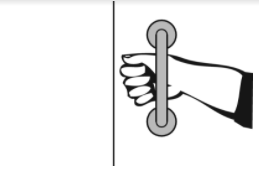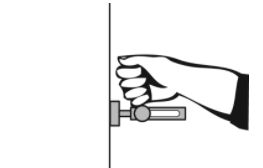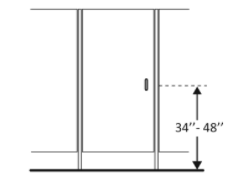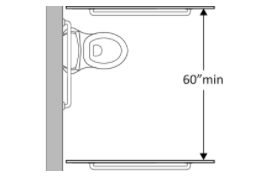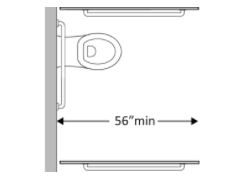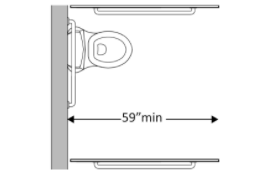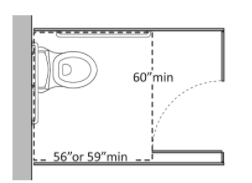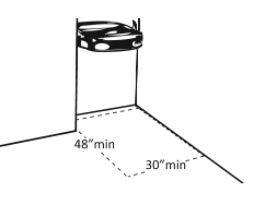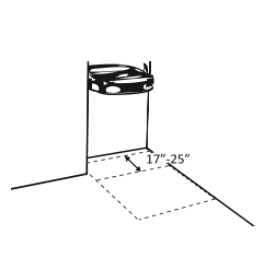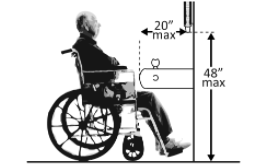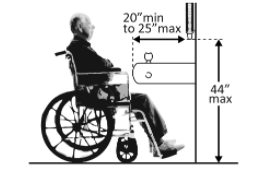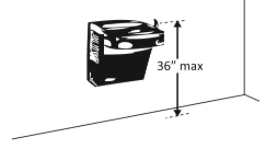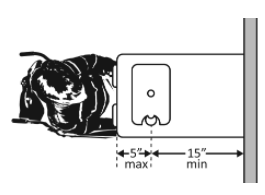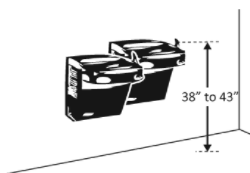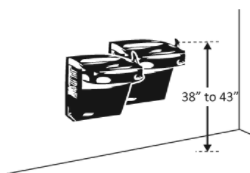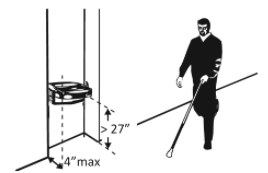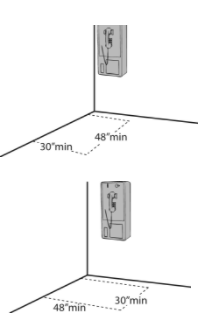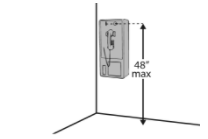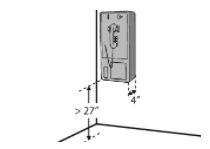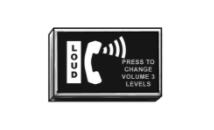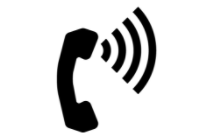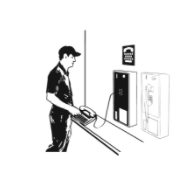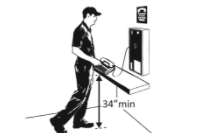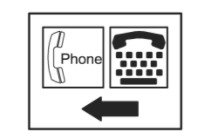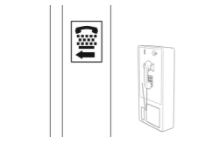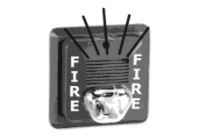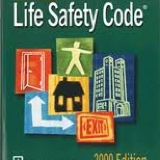Title Page
-
Audit / Project Title
-
Client / Site / Building
-
Conducted on
-
Prepared by
-
Location
-
Surveyors
-
Contact Information
Priority 1 – Approach & Entrance
-
Instructions:
1. Answer "Yes", "No", "N/A" for the questions provided.
2. Add photos and notes by clicking on the paperclip icon.
3. To add a Corrective Actions, click on the paperclip icon then "Add Action", provide a description, assign to a member, set priority and due date.
4. Complete audit by providing digital signature.
5. Share your report by exporting as PDF, Word, Excel or Web Link. -
1.1 Is there at least one route from site arrival points (parking, passenger loading zones, public sidewalks and public transportation stops) that does not require the use of stairs?<br>[See 2010 ADA Standards for Accessible Design – 206.2.1]
-
Location of route
-
Possible solutions:
• Add a ramp
• Regrade to 1:20 maximum slope
• Add a lift if site constraints prevent other solutions
Parking
-
Accessible parking spaces should be identified by size, access aisle and signage.
-
1.2 If parking is provided for the public, are an adequate number of accessible spaces provided? [208.2]
-
Total number of spaces
-
Accessible number of spaces
-
-
Possible solution:
• Reconfigure by repainting lines. -
1.3 Of the accessible spaces, is at least one a van accessible space? * [208.2.4]
-
*For every 6 or fraction of 6 parking spaces required by the table above, at least 1 should be a van accessible space.
-
Possible solutions:
* If constructed before 3/15/2012, parking is compliant if at least 1 in every 8 accessible spaces is van accessible.
• Reconfigure by repainting lines. -
1.4 Are accessible spaces at least 8 feet wide with an access aisle at least 5 feet wide? [502.2, 502.3]<br>Note: Two spaces may share an access aisle. Check state/local requirements; some specify that each space have its own aisle.
-
Measurement
-
-
Possible solution:
• Reconfigure by repainting lines. -
1.5 Is the van accessible space at least 11 feet wide with an access aisle at least 5 feet wide? [502.2]
-
1.5 Is the van accessible space at least 8 feet wide with an access aisle at least 8 feet wide? [502.2]
-
Measurement
-
Measurement
-
-
Possible solution:
• Reconfigure to provide van-accessible space(s). -
1.6 Is at least 98 inches of vertical clearance provided for the van accessible space? [502.5]
-
Measurement
-
-
Possible solution:
• Reconfigure to provide van-accessible space(s). -
1.7 Are the access aisles marked so as to discourage parking in them? [502.3.3]<br>Note: The marking method and color may be addressed by state/local requirements.
-
-
Possible solution:
• Mark access aisles -
1.8 Is the slope of the accessible parking spaces and access aisles no steeper than 1:48 in all directions? [502.4]
-
Measurement
-
Possible solution:
• Regrade surface -
1.9 Do the access aisles adjoin an accessible route? [502.3]
-
-
Possible solutions:
• Create accessible route
• Relocate accessible space -
1.10 Are accessible spaces identified with a sign that includes the International Symbol of Accessibility?<br>Note: The International Symbol of Accessibility is not required on the ground.
-
Is the bottom of the sign at least 60 inches above the ground? [502.6]
-
Measurement
-
-
Possible solution:
• Install signs -
1.11 Are there signs reading “van accessible” at van accessible spaces?
-
-
Possible solution:
• Install signs -
1.12 Of the total parking spaces, are the accessible spaces located on the closest accessible route to the accessible entrance(s)? [208.3.1]<br>Note: If parking serves multiple entrances, accessible parking should be dispersed.
-
Possible solution:
• Reconfigure spaces
Exterior Accessible Route
-
1.13 Is the route stable, firm and slip-resistant? [302.1]
-
Possible solutions:
• Repair uneven paving
• Fill small bumps and breaks with patches
• Replace gravel with asphalt or another surface -
1.14 Is the route at least 36 inches wide? [403.5.1]
-
Measurement
-
-
Note: The accessible route can narrow to 32 inches min. for a max. of 24 inches. These narrower portions of the route must be at least 48 inches from each other.
-
Possible solutions:
• Change or move landscaping, furnishings or other items
• Widen route -
1.15 If the route is greater than 200 feet in length and less than 60 inches wide, is there a passing space no less than 60 x 60 inches? [403.5.3]
-
Measurement
-
-
Possible solution:
• Widen route for passing space -
1.16 If there are grates or openings on the route, are the openings no larger than ½ inches?
-
Measurement
-
Is the long dimension perpendicular to the dominant direction of travel? [302.3]
-
-
Possible solution:
• Replace or move grate -
1.17 Is the running slope no steeper than 1:20, i.e. for every inch of height change there are at least 20 inches of route run? [403.3]<br>Note: If the running slope is steeper than 1:20, treat as a ramp and add features such as edge protection and handrails.
-
Measurement
-
-
Possible solution:
• Regrade to 1:20 max. -
1.18 Is the cross slope no steeper than 1:48? [403.3]
-
Measurement
-
-
Possible solution:
• Regrade to 1:48 max.
Curb Ramps
-
1.19 If the accessible route crosses a curb, is there a curb ramp? [402.2]
-
-
Possible solution:
• Install curb ramp -
1.20 Is the running slope of the curb ramp no steeper than 1:12, i.e. for every inch of height change there are at least 12 inches of curb ramp run? [406.1, 405.2]
-
Measurement
-
-
Possible solution:
• Regrade curb ramp -
1.21 Is the cross slope of the curb ramp, excluding flares, no steeper than 1:48? [406.1, 405.3]
-
Measurement
-
-
Possible solution:
• Regrade curb ramp -
1.22 Is the curb ramp, excluding flares, at least 36 inches wide? [406.1, 405.5]
-
Measurement
-
-
Possible solution:
• Widen curb ramp -
1.23 At the top of the curb ramp, is there a level landing (slope no steeper than 1:48 in all directions) that is at least 36 inches long and at least as wide as the curb ramp? [406.4]
-
Measurement
-
If there are curb ramp flares, are the slopes of the flares no steeper than 1:10, i.e. for every inch of height change there are at least 10 inches of flare run?<br>[406.3]
-
Measurement
-
-
Possible solutions:
• Reconfigure
• Add ramp flares -
1.24 If the landing at the top is less than 36 inches long, are there curb ramp flares?
-
Are the slopes of the flares no greater than 1:12, i.e. for every inch of height change there are at least 12 inches of flare run? [406.4]
-
Measurement
-
-
Possible solutions:
• Add ramp flares
• Regrade flares
Priority 1 – Approach & Entrance
Ramps
-
If any portion of the accessible route is steeper than 1:20, it should be treated as a ramp.
-
1.25 If there is a ramp, is it at least 36 inches wide? [405.5]<br>Note: If there are handrails, measure between the handrails.
-
Measurement
-
-
Possible solution:
• Alter ramp -
1.26 Is the surface stable, firm and slip resistant? [405.4]
-
Possible solution:
• Resurface ramp -
1.27 For each section of the ramp, is the running slope no greater than 1:12, i.e. for every inch of height change there are at least 12 inches of ramp run? [405.2]<br>Note: Rises no greater than 3 inches with a slope no steeper than 1:8 and rises no greater than 6 inches with a slope no steeper than 1:10 are permitted when such slopes are necessary due to space limitations.
-
Measurement
-
-
Possible solutions:
• Relocate ramp
• Lengthen ramp to decrease slope -
1.28 Is there a level landing that is at least 60 inches long and at least as wide as the ramp at the top of the ramp?
-
Measurement
-
1.28 Is there a level landing that is at least 60 inches long and at least as wide as the ramp at the bottom of the ramp?
-
Measurement
-
-
Possible solutions:
• Alter ramp
• Relocate ramp -
1.29 Is there a level landing where the ramp changes direction that is at least 60 x 60 inches? [405.7.4]
-
Measurement
-
-
Possible solutions:
• Alter ramp
• Increase landing size -
1.30 If the ramp has a rise higher than 6 inches, are there handrails on both sides? [405.8]<br>Note: Curb ramps are not required to have handrails.
-
Measurement
-
-
Possible solution:
• Add handrails -
1.31 Is the top of the handrail gripping surface no less than 34 inches and no greater than 38 inches above the ramp surface? [505.4]
-
Measurement
-
-
Possible solutions:
• Reconfigure or replace handrails
• Adjust handrail height -
1.32 Is the handrail gripping surface continuous and not obstructed along the top or sides? [505.3]
-
If there are obstructions, is the bottom of the gripping surface obstructed no greater than 20%? [505.6]
-
Measurement
-
-
Possible solution:
• Reconfigure or replace handrails -
1.33 If the handrail gripping surface is circular, is it no less than 1 ¼ inches and no greater than 2 inches in diameter? [505.7.1]
-
Measurement
-
-
Possible solution:
• Replace handrails -
1.34 If the handrail gripping surface is non-circular:
-
Is the perimeter no less than 4 inches and no greater than 6¼ inches?
-
Measurement
-
Is the cross section no greater than 2¼ inches? [505.7.2]
-
Measurement
-
Possible solution:
• Replace handrails -
1.35 Does the handrail:
-
Extend at least 12 inches horizontally beyond the top and bottom of the ramp? <br>Note: If a 12-inch extension would be a hazard (in circulation path) it is not required.
-
Measurement
-
-
Return to a wall, guard, or landing surface? [505.10.1]
-
Possible solution:
• Alter handrails -
1.36 To prevent wheelchair casters and crutch tips from falling off:
-
-
Does the surface of the ramp extend at least 12 inches beyond the inside face of the handrail?
-
Measurement
-
Is there a curb or barrier that prevents the passage of a 4-inch diameter sphere? [405.9.1, 405.9.2]
-
Measurement
-
Possible solutions:
• Add curb
• Add barrier
• Extend ramp width
Entrance
-
1.37 Is the main entrance accessible?
-
1.38 Is there an alternative accessible entrance?
-
Can the alternative accessible entrance be used independently and during the same hours as the main entrance?
-
Possible solutions:
• Designate an entrance and make it accessible
• Ensure that accessible entrance can be used independently and during the same hours as the main entrance -
Possible solutions:
• Redesign to make it accessible -
1.39 Do all inaccessible entrances have signs indicating the location of the nearest accessible entrance? [216.6]
-
Possible solutions:
• Install signs
• Install signs on route before people get to inaccessible entrances so that people do not have to turn around and retrace route -
1.40 If not all entrances are accessible, is there a sign at the accessible entrance with the International Symbol of Accessibility? [216.6]
-
Possible solution:
• Install sign -
1.41 Is the clear opening width of the accessible entrance door at least 32 inches, between the face of the door and the stop, when the door is open 90 degrees? [404.2.3]
-
Measurement
-
Possible solutions:
• Alter door
• Install offset hinges -
1.42 If there is a front approach to the pull side of the door, is there at least 18 inches of maneuvering clearance beyond the latch side plus at least 60 inches clear depth?<br>Note: See 2010 Standards 404.2.4 for maneuvering clearance requirements on the push side of the door and side approaches to the pull side of the door
-
Measurement
-
On both sides of the door, is the ground or floor surface of the maneuvering clearance level (no steeper than 1:48)? [404.2.4]
-
Measurement
-
Possible solutions:
• Remove obstructions
• Reconfigure walls
• Add automatic door opener -
1.43 If the threshold is vertical is it no more than ¼ inch high?<br>Note: The first ¼ inch of the ½ or ¾ inch threshold may be vertical; the rest must be beveled.
-
Measurement
-
No more than ½ inch high with the top ¼ inch beveled no steeper than 1:2, if the threshold was installed on or after the 1991 ADA Standards went into effect (1/26/93)?
-
Measurement
-
No more than ¾ inch high with the top ½ inch beveled no steeper than 1:2, if the threshold was installed before the 1991 ADA Standards went into effect (1/26/93)?<br> [404.2.5, 303.2]
-
Measurement
-
Possible solution:
• Remove or replace threshold -
1.44 Is the door equipped with hardware that is operable with one hand and does not require tight grasping, pinching or twisting of the wrist, door handle, lock (if provided)? [404.2.7]
-
Possible solutions:
• Replace inaccessible knob with lever, loop or push hardware
• Add automatic door opener -
1.45 Are the operable parts of the door hardware no less than 34 inches and no greater than 48 inches above the floor or ground surface? [404.2.7]
-
Measurement
-
Possible solution:
• Change hardware height -
1.46 If the door has a closer, does it take at least 5 seconds to close from an open position of 90 degrees to a position of 12 degrees from the latch? [404.2.8]
-
Measurement
-
Possible solution:
• Adjust closer -
1.47 If there are two doors in a series, e.g. vestibule, is the distance between the doors at least 48 inches plus the width of the doors when swinging into the space? [404.2.6]
-
Measurement
-
Possible solutions:
• Remove inner door
• Change door swing -
1.48 If provided at the building entrance, are carpets or mats no higher than ½ inch thick? [302.2]
-
Measurement
-
-
Possible solution:
• Replace or remove mats -
1.49 Are edges of carpets or mats securely attached to minimize tripping hazards? [302.2]
-
Possible solution:
• Secure carpeting or mats at edges -
Auditor Sign Off
Priority 2 - Access to Goods and Services
-
2.1 Does the accessible entrance provide direct access to the main floor, lobby and elevator? [See 2010 ADA Standards for Accessible Design – 206.4
-
Possible Solutions:
• Create accessible route -
2.1 Does the accessible entrance provide direct access to the main floor, lobby and elevator? [See 2010 ADA Standards for Accessible Design – 206.4
-
Possible Solutions:
• Create accessible route
Ramps
-
2.10 If there is a ramp, is it at least 36 inches wide? [405.5]
-
Measurement:
-
Note: If there are handrails, measure between the handrails.
-
-
Possible Solutions:
• Alter ramp -
2.11 Is the surface stable, firm and slip resistant? [405.4]
-
Possible Solutions:
• Resurface ramp -
2.12 For each section of the ramp, is the running slope no greater than 1:12, i.e. for every inch of height change there are at least 12 inches of ramp run? [405.2]
-
Measurement:
-
Note: Rises no greater than 3 inches with a slope no steeper than 1:8 and rises no greater than 6 inches with a slope no steeper than 1:10 are permitted when due to space limitations.
-
-
Possible Solutions:
• Lengthen ramp to decrease slope
• Relocate ramp -
2.13A Is there a level landing that is at least 60 inches long and at least as wide as the ramp at the top of the ramp?
-
Measurement:
-
-
Possible Solutions:
• Alter ramp
• Relocate ramp -
2.13B Is there a level landing that is at least 60 inches long and at least as wide as the ramp at the bottom of the ramp? [405.7.2, 405.7.3]
-
Measurement:
-
-
Possible Solutions:
• Alter ramp
• Relocate ramp -
2.14 Is there a level landing where the ramp changes direction that is at least 60 x 60 inches? [405.7.4]
-
Measurement:
-
-
Possible Solutions:
• Increase landing size -
2.15 If the ramp has a rise higher than 6 inches are there handrails on both sides? [405.8]
-
Measurement:
-
-
Possible Solutions:
• Add handrails -
2.16 Is the top of the handrail gripping surface no less than 34 inches and no greater than 38 inches above the ramp surface?[505.4]
-
Measurement:
-
-
Possible Solutions:
• Adjust handrail height -
2.17A Is the handrail gripping surface continuous and not obstructed along the top or sides? [505.3]
-
Measurement:
-
-
Possible Solutions:
• Adjust handrail height -
2.17B If there are obstructions, is the bottom of the gripping surface obstructed no more than 20%? [505.6]
-
Measurement:
-
-
Possible Solutions:
• Reconfigure or replace handrails -
2.18 If the handrail gripping surface is circular, is it no less than 1 ¼ inches and no greater than 2 inches in diameter?<br> [505.7.1]
-
Measurement:
-
-
Possible Solutions:
• Replace handrails -
2.19A f the handrail gripping surface is non-circular, is the perimeter no less than 4 inches and no greater than 6¼ inches?
-
Measurement:
-
-
Possible Solutions:
• Replace handrails -
2.19B Is the cross section no greater than 2¼ inches in diameter?
-
Measurement:
-
-
Possible Solutions:
• Replace handrails -
2.20A Does the handrail extend at least 12 inches horizontally beyond the top and bottom of the ramp?
-
Measurement:
-
-
Possible Solutions:
• Alter handrails -
2.20B Does the handrail return to a wall, guard, or landing surface? [505.10.1]
-
Measurement:
-
Note: If a 12” extension would be hazardous (in circulation path), it is not required.
-
-
Possible Solutions:
• Alter handrails -
2.221A To prevent wheelchair casters and crutch tips from falling off does the surface of the ramp extend at least 12 inches beyond the inside face of the handrail?
-
Measurement:
-
-
Possible Solutions:
• Add curb
• Add barrier
• Extend ramp width -
2.221B Is there a curb or barrier that prevents the passage of a 4-inch diameter sphere? [405.9.1, 405.9.2]
-
Measurement:
-
-
Possible Solutions:
• Add curb
• Add barrier
• Extend ramp width
Interior Accessible Route
-
2.2 Are all public spaces on at least one accessible route? [206.2.4]
-
Possible Solutions:
• Create accessible route -
2.3 Is the route stable, firm and slip-resistant? [40.2, 302.1]
-
Possible Solutions:
• Repair uneven surfaces -
2.4 Is the route at least 36 inches wide? [403.5.1]
-
Measurement:
-
Note: The accessible route can narrow to 32 inches min. for a max. of 24 inches. These narrower portions of the route must be at least 48 inches from each other.
-
-
Possible Solutions:
• Widen route -
2.5 If the route is greater than 200 feet in length and less than 60 inches wide, is there a passing space no less than 60 x 60 inches? [403.5.3]
-
Measurement:
-
-
Possible Solutions:
• Widen route for passing space -
2.6 Is the running slope no steeper than 1:20, i.e. for every inch of height change there are at least 20 inches of route run? [403.3]
-
Measurement:
-
Note: If the running slope is steeper than 1:20, treat as a ramp and add features such as edge protection and handrails.
-
-
Possible Solutions:
• Regrade -
2.7 Is the cross slope no steeper than 1:48? [403.3]
-
Measurement:
-
-
Possible Solutions:
• Regrade -
2.8A Do all objects on circulation paths through public areas, e.g. fire extinguishers, drinking fountains, signs, etc., protrude no more than 4 inches into the path?
-
Measurement:
-
-
Possible Solutions:
• Remove object
• Add tactile warning such as permanent planter or partial walls -
2.8B If an object protrudes more than 4 inches, is the bottom leading edge at 27 inches or lower above the floor?<br>[307.2]
-
Measurement:
-
-
Possible Solutions:
• Remove object
• Add tactile warning such as permanent planter or partial walls -
2.8C Is the bottom leading edge at 80 inches or higher above the floor?[307.4]
-
Measurement:
-
-
Possible Solutions:
• Remove object
• Add tactile warning such as permanent planter or partial walls -
2.9 Are there elevators or platform lifts to all public stories?
-
Note: Vertical access is not required in new construction or alterations if a facility is less than three stories or has less than 3,000 square feet per story, unless the facility is a shopping center, shopping mall, professional office of a health care provider, transportation terminal, state facility or local government facility
-
Possible Solutions:
• Install if necessary
• Offer goods and services on an accessible story
Ramps
-
2.10 If there is a ramp, is it at least 36 inches wide? [405.5]
-
Measurement:
-
Note: If there are handrails, measure between the handrails.
-
-
Possible Solutions:
• Alter ramp -
2.11 Is the surface stable, firm and slip resistant? [405.4]
-
Possible Solutions:
• Resurface ramp -
2.12 For each section of the ramp, is the running slope no greater than 1:12, i.e. for every inch of height change there are at least 12 inches of ramp run? [405.2]
-
Measurement:
-
Note: Rises no greater than 3 inches with a slope no steeper than 1:8 and rises no greater than 6 inches with a slope no steeper than 1:10 are permitted when due to space limitations.
-
-
Possible Solutions:
• Lengthen ramp to decrease slope
• Relocate ramp -
2.13a Is there a level landing that is at least 60 inches long and at least as wide as the ramp at the top of the ramp?
-
Measurement:
-
-
Possible Solutions:
• Alter ramp
• Relocate ramp -
2.13b Is there a level landing that is at least 60 inches long and at least as wide as the ramp at the bottom of the ramp?
-
Measurement:
-
-
Possible Solutions:
• Alter ramp
• Relocate ramp -
2.14 Is there a level landing where the ramp changes direction that is at least 60 x 60 inches? [405.7.4]
-
Measurement:
-
-
Possible Solutions:
• Increase landing size -
2.15 If the ramp has a rise higher than 6 inches are there handrails on both sides?[405.8]
-
Measurement:
-
-
Possible Solutions:
• Add handrails -
2.16 Is the top of the handrail gripping surface no less than 34 inches and no greater than 38 inches above the ramp surface? [505.4]
-
Measurement:
-
-
Possible Solutions:
• Adjust handrail height -
2.17a Is the handrail gripping surface continuous and not obstructed along the top or sides? [505.3]
-
Possible Solutions:
• Reconfigure or replace handrails -
2.17b If there are obstructions, is the bottom of the gripping surface obstructed no more than 20%?<br>[505.6]
-
Measurement:
-
Possible Solutions:
• Reconfigure or replace handrails -
2.18 If the handrail gripping surface is circular, is it no less than 1 ¼ inches and no greater than 2 inches in diameter?<br>[505.7.1]
-
Measurement:
-
-
Possible Solutions:
• Replace handrails -
2.19a If the handrail gripping surface is non-circular is the perimeter no less than 4 inches and no greater than 6¼ inches?
-
Measurement:
-
-
Possible Solutions:
• Replace handrails -
2.19b If the handrail gripping surface is non-circular is the cross section no greater than 2¼ inches in diameter?<br>[505.7.2]
-
Measurement:
-
-
Possible Solutions:
• Replace handrails -
2.20a Does the handrail extend at least 12 inches horizontally beyond the top and bottom of the ramp?
-
Measurement:
-
-
Possible Solutions:
• Alter handrails -
2.20b Does the handrail return to a wall, guard, or landing surface? [505.10.1]
-
-
Note: If a 12” extension would be hazardous (in circulation path), it is not required.
-
Possible Solutions:
• Alter handrails -
2.21a To prevent wheelchair casters and crutch tips from falling off does the surface of the ramp extend at least 12 inches beyond the inside face of the handrail?
-
Measurement:
-
-
Possible Solutions:
• Add curb
• Add barrier
• Extend ramp width -
2.21b To prevent wheelchair casters and crutch tips from falling off is there a curb or barrier that prevents the passage of a 4-inch diameter sphere? [405.9.1, 405.9.2]
-
Measurement:
-
-
Possible Solutions:
• Add curb
• Add barrier
• Extend ramp width -
2.22 If there is a full size or LULA elevator, are the call buttons no higher than 54 inches above the floor? [407.2.1.1]
-
Measurement:
-
-
Possible Solutions:
• Change call button height -
2.23 If there is a full size or LULA elevator, does the sliding door reopen automatically when obstructed by an object or person?* [407.3.3]
-
If constructed before 3/15/2012 and manually operated, the door is not required to reopen automatically
-
Possible Solutions:
• Install opener -
2.24a If there is a LULA elevator with a swinging door is the door power- operated?
-
Possible Solutions:
• Add power operated door
• Adjust opening time -
2.24b Does the door remain open for at least 20 seconds when activated? [403.3.2]
-
Possible Solutions:
• Add power operated door
• Adjust opening time -
2.25a If there is a full size elevator is the interior at least 54 inches deep by at least 36 inches wide with at least 16 sq. ft. of clear floor area?
-
Measurement:
-
-
Possible Solutions:
• Replace elevator -
2.25b If there is a full size elevator is the door opening width at least 32 inches? [407.4.1 Exception]
-
Measurement:
-
-
Possible Solutions:
• Replace elevator -
2.26a If there is a LULA elevator, is the interior at least 51 inches deep by 51 inches wide with a door opening width of at least 36 inches?
-
Measurement:
-
-
Possible Solutions:
• Replace elevator -
2.26b If there is a LULA elevator, at least 54 inches deep by at least 36 inches wide with at least 15 sq. ft. of clear floor area and a door opening width of at least 32 inches? [408.4.1 Exceptions 1 and 2]
-
Measurement:
-
-
Possible Solutions:
• Replace elevator -
2.27a If there is a full size or LULA elevator, are the in-car controls no less than 15 inches and no greater 48 inches above the floor?
-
Measurement:
-
-
Possible Solutions:
• Change control height -
2.27b If there is a full size or LULA elevator, up to 54 inches above the floor for a parallel approach? [408.4.6, 407.4.6.1]
-
Measurement:
-
-
Possible Solutions:
• Change control height -
2.28 If there is a LULA elevator, are the in-car controls centered on a side wall? [408.4.6]
-
Measurement:
-
-
Possible Solutions:
• Reconfigure controls -
2.29a If there is a full size or LULA elevator Are the car control buttons designated with raised characters?
-
-
Possible Solutions:
• Add raised characters
• Add Braille -
2.29b If there is a full size or LULA elevator are the car control buttons designated with Braille?<br>[407.4.7.1, 703.2]
-
-
Possible Solutions:
• Add raised characters
• Add Braille -
2.30 <br>If there is a full size or LULA elevator, are there audible signals which sound as the car passes or is about to stop at a floor? [407.4.8]
-
Possible Solutions:
• Install audible signals -
2.31a If there is a full size or LULA elevator is there a sign on both door jambs at every floor identifying the floor?
-
-
Possible Solutions:
• Install signs
• Change sign height -
2.31b If there is a full size or LULA elevator is there a tactile star on both jambs at the main entry level?
-
-
Possible Solutions:
• Install signs
• Change sign height -
2.31c If there is a full size or LULA elevator do text characters contrast with their backgrounds?
-
-
Possible Solutions:
• Install signs
• Change sign height -
2.31d If there is a full size or LULA elevator are text characters raised?
-
-
Possible Solutions:
• Install signs
• Change sign height -
2.31e If there is a full size or LULA elevator is there Braille?
-
-
Possible Solutions:
• Install signs
• Change sign height -
2.31f If there is a full size or LULA elevator is the sign mounted between 48 inches to the baseline of the lowest character and 60 inches to the baseline of the highest character above the floor?* [407.2.3, 408.2.3]
-
Measurement:
-
If constructed before 3/15/2012 and mounted no higher than 60 inches to the centerline of the sign, relocation is not required
-
-
Possible Solutions:
• Install signs
• Change sign height -
2.28 If there is a LULA elevator, are the in-car controls centered on a side wall? [408.4.6]
-
Measurement:
-
-
Possible Solutions:
• Reconfigure controls
Platform Lifts
-
2.32 If a lift is provided, can it be used without assistance from others? [410.1]
-
Measurement:
-
-
Possible Solutions:
• Reconfigure so independently operable -
2.33 Is there a clear floor space at least 30 inches wide by at least 48 inches long for a person using a wheelchair to approach and reach the controls to use the lift? [410.5]
-
Measurement:
-
-
Possible Solutions:
• Remove obstructions -
2.34 Are the lift controls no less than 15 inches and no greater than 48 inches above the floor? [410.5]
-
Measurement:
-
-
Possible Solutions:
• Change control height -
2.35 Is there a clear floor space at least 36 inches wide by at least 48 inches long inside the lift?<br>[410.3]
-
Measurement:
-
-
Possible Solutions:
• Replace lift -
2.36 If there is an end door, is the clear opening width at least 32 inches? [410.6]
-
Measurement:
-
-
Possible Solutions:
• Alter door width -
2.37 If there is a side door, is the clear opening width at least 42 inches? [410.6]
-
Measurement:
-
-
Possible Solutions:
• Alter door width
Signs “Tactile characters” are read using touch, i.e. raised characters and Braille.
-
2.38a If there are signs designating permanent rooms and spaces not likely to change over time, e.g. room numbers and letters, room names, and exit signs: [216.2]<br><br>Do text characters contrast with their backgrounds?<br>[703.5]
-
-
Possible Solutions:
• Install tactile sign
• Relocate sign -
2.38b If there are signs designating permanent rooms and spaces not likely to change over time, e.g. room numbers and letters, room names, and exit signs: [216.2]<br><br>Are text characters raised? [703.2]
-
-
Possible Solutions:
• Install tactile sign
• Relocate sign -
2.38c If there are signs designating permanent rooms and spaces not likely to change over time, e.g. room numbers and letters, room names, and exit signs: [216.2]<br><br>Is there Braille? [703.3]
-
-
Possible Solutions:
• Install tactile sign
• Relocate sign -
2.38d If there are signs designating permanent rooms and spaces not likely to change over time, e.g. room numbers and letters, room names, and exit signs: [216.2]<br><br>Is the sign mounted: On the wall on the latch side of the door? [703.4.2]
-
Note: Signs are permitted on the push side of doors with closers and without hold-open devices.
-
-
Possible Solutions:
• Install tactile sign
• Relocate sign -
2.38f With clear floor space beyond the arc of the door swing between the closed position and 45-degree open position, at least 18 x 18 inches centered on the tactile characters?* [703.4.2]
-
Measurement:
-
If constructed before 3/15/2012 and a person may approach within 3 inches of the sign without encountering protruding objects or standing within the door swing, relocation not required
-
-
Possible Solutions:
• Install tactile sign
• Relocate sign -
2.38g So the baseline of the lowest character is at least 48 inches above the floor and the baseline of the highest character is no more than 60 inches above the floor? *[703.4.1]
-
Measurement:
-
*If constructed before 3/15/2012 and mounted no higher than 60 inches to the centerline of the sign, relocation not required
-
Note: If the sign is at double doors with one active leaf, the sign should be on the inactive leaf; if both leaves are active, the sign should be on the wall to the right of the right leaf.
-
-
Possible Solutions:
• Install tactile sign
• Relocate sign -
2.39a If there are signs that provide direction to or information about interior spaces:<br><br>Do text characters contrast with their backgrounds? <br>[703.5.1]
-
-
Possible Solutions:
• Install signs with contrasting characters
• Change sign height -
2.39b If there are signs that provide direction to or information about interior spaces:<br><br>Is the sign mounted so that characters are at least 40 inches above the floor?<br>[703.5.6]
-
Measurement:
-
Note: Raised characters and Braille are not required.
-
-
Possible Solutions:
• Install signs with contrasting characters
• Change sign height
Interior Doors – to classrooms, medical exam rooms, conference rooms, etc.
-
2.40 Is the door opening width at least 32 inches clear, between the face of the door and the stop, when the door is open 90 degrees? [404.2.3]
-
Measurement:
-
-
Possible Solutions:
• Install offset hinges
• Alter the doorway -
2.41a f there is a front approach to the pull side of the door, is there at least 18 inches of maneuvering clearance beyond the latch side plus at least 60 inches clear depth?
-
Measurement:
-
Note: See 2010 Standards 404.2.4 for maneuvering clearance requirements on the push side of the door and side approaches to the pull side of the door.
-
-
Possible Solutions:
• Remove obstructions
• Reconfigure walls
• Add automatic door op -
2.41b On both sides of the door, is the floor surface of the maneuvering clearance level (no steeper than 1:48)?<br>[404.2.4]
-
Measurement:
-
-
Possible Solutions:
• Remove obstructions
• Reconfigure walls
• Add automatic door op -
2.42a If the threshold is vertical is it no more than ¼ inch high?
-
Measurement:
-
-
Possible Solutions:
• Remove or replace threshold -
2.42b If the threshold is vertical is it no more than ½ inch high with the top ¼ inch beveled no steeper than 1:2, if the threshold was installed on or after the 1991 ADA Standards went into effect (1/26/93)?
-
Measurement:
-
-
Possible Solutions:
• Remove or replace threshold -
2.42c No more than ¾ inch high with the top ½ inch beveled no steeper than 1:2, if the threshold was installed before the 1991 ADA Standards went into effect (1/26/93)? [404.2.5, 303.2]
-
Measurement:
-
-
Note: The first ¼ inch of the ½ or ¾ inch threshold may be vertical; the rest must be beveled.
-
Possible Solutions:
• Remove or replace threshold -
2.43a Is the door equipped with hardware that is operable with one hand and does not require tight grasping, pinching or twisting of the wrist?
-
-
Possible Solutions:
• Replace inaccessible knob with lever, loop or push hardware
• Add automatic door ope -
2.43b Is the door equipped with door handle?
-
-
Possible Solutions:
• Replace inaccessible knob with lever, loop or push hardware
• Add automatic door ope -
2.43c Lock (if provided)? [404.2.7]
-
-
Possible Solutions:
• Replace inaccessible knob with lever, loop or push hardware
• Add automatic door ope -
2.44 <br>Are the operable parts of the hardware no less than 34 inches and no greater than 48 inches above the floor? [404.2.7]
-
Measurement:
-
-
Possible Solutions:
• Change hardware height -
2.45 Can the door be opened easily (5 pounds maximum force)? [404.2.9]
-
Measurement:
-
-
Note: You can use a pressure gauge or fish scale to measure force. If you do not have one you will need to judge whether the door is easy to open.
-
Possible Solutions:
• Adjust or replace closers
• Install lighter doors
• Install power-assisted or automatic door openers -
2.46 If the door has a closer, does it take at least 5 seconds to close from an open position of 90 degrees to a position of 12 degrees from the latch? [404.2.8.1]
-
Measurement:
-
-
Possible Solutions:
• Adjust closer
Priority 2 - Access to Goods and Services
Rooms and Spaces – stores, supermarkets, libraries, etc.
-
2.47 <br>Are aisles and pathways to goods and services, and to one of each type of sales and service counters, at least 36 inches wide?<br>[403.5.1]
-
Measurement:
-
-
Possible Solutions:
• Rearrange goods, equipment and furniture -
2.48 Are floor surfaces stable, firm and slip resistant? [302.1]
-
Possible Solutions:
• Change floor surface -
2.49a If there is carpet is it no higher than ½ inch?
-
Measurement:
-
-
Possible Solutions:
• Replace carpet -
2.49b Is it securely attached along the edges? [302.2]
-
-
Possible Solutions:
• Replace carpet
Controls – light switches, security and intercom systems, emergency/alarm boxes, etc.
-
2.50 Are the operable parts no higher than 48 inches above the floor?*<br>[309.3, 308]
-
Measurement:
-
*If constructed before 3/15/2012 and a parallel approach is provided, controls can be 54 inches above the floor
-
-
-
Possible Solutions:
• Change height of control -
2.51 Can the control be operated with one hand and without tight grasping, pinching, or twisting of the wrist?<br>[309.4]
-
-
Possible Solutions:
• Replace control -
2.52 Are an adequate number of wheelchair spaces provided? [221.2.1]
-
Total #:
-
Wheelchair #:
-
-
Possible Solutions:
• Reconfigure to add wheelchair spaces -
2.53 Are wheelchair spaces dispersed to allow location choices and viewing angles equivalent to other seating, including specialty seating areas that provide distinct services and amenities? [221.2.3]
-
-
Possible Solutions:
• Reconfigure to disperse wheelchair spaces -
2.54 Where people are expected to remain seated, do people in wheelchair spaces have a clear line of sight over and between the heads of others in front of them? [802.2.1.1, 802.1.1.2]
-
-
Possible Solutions:
• Alter for line of sight -
2.55 Where people are expected to stand, do people in wheelchair spaces have a clear line of sight over and between the heads of others in front of them? [802.2.2.1, 802.1.2.2]
-
-
Possible Solutions:
• Alter for line of sight -
2.56 If there is a single wheelchair space, is it at least 36 inches wide? [802.1.2]
-
Measurement:
-
-
Possible Solutions:
• Alter space -
2.57 If there are two adjacent wheelchair spaces, are they each at least 33 inches wide?<br>[802.1.2]
-
Measurement:
-
-
Possible Solutions:
• Alter space -
2.58 If the wheelchair space can be entered from the front or rear, is it at least 48 inches deep?<br>[802.1.3]
-
Measurement:
-
-
Possible Solutions:
• Alter space -
2.59 If the wheelchair space can only be entered from the side, is it at least 60 inches deep? [802.1.3]
-
Measurement:
-
-
Possible Solutions:
• Alter space -
2.60 Do wheelchair spaces adjoin, but not overlap, accessible routes?<br>[802.1.4]
-
-
Possible Solutions:
• Alter space -
2.61 Is there at least one companion seat for each wheelchair space?<br>[221.3]
-
Possible Solutions:
• Add companion seats -
2.62 Is the companion seat located so the companion is shoulder-to-shoulder with the person in a wheelchair?<br>[802.3.1]
-
-
Possible Solutions:
• Alter seating -
2.63 Is the companion seat equivalent in size, quality, comfort and amenities to seating in the immediate area?<br>[802.3.2]
-
Possible Solutions:
• Add equivalent seating
Seating: At dining surfaces (restaurants, cafeterias, bars, etc.) and non-employee work surfaces (libraries, conference rooms, etc.)
-
2.64 Are at least 5%, but no fewer than one, of seating and standing spaces accessible for people who use wheelchairs?<br>[226.1]
-
Total #:
-
Wheelchair #:
-
-
Possible Solutions:
• Alter to provide accessible spaces -
2.65 Is there a route at least 36 inches wide to accessible seating? [403.5.1]
-
Measurement:
-
-
Possible Solutions:
• Widen route -
2.66 At the accessible space(s), is the top of the accessible surface no less than 28 inches and no greater than 34 inches above the floor?[902.3]
-
Measurement:
-
-
Note: If for children, the top should be no less than 26 inches and no greater than 30 inches above the floor.
-
Possible Solutions:
• Alter surface height -
2.67a Is there a clear floor space at least 30 inches wide by at least 48 inches long for a forward approach? <br>[305.3]
-
Measurement:
-
-
Possible Solutions:
• Alter table or work surface
• Add accessible table or work surface -
2.67b Does it extend no less than 17 inches and no greater than 25 inches under the surface?
-
Measurement:
-
-
Possible Solutions:
• Alter table or work surface
• Add accessible table or work surface
Seating: General – reception areas, waiting rooms, etc.
-
2.68 Is there at least one space at least 36 inches wide by at least 48 inches long for a person in a wheelchair?<br>[802.1.2, 802.1.3]
-
Measurement:
-
-
Possible Solutions:
• Move furniture and equipment to provide space -
2.69 In locker rooms, dressing rooms and fitting rooms, is there at least one room with a bench?<br>[222.1, 803.4]
-
Possible Solutions:
• Add bench -
2.70a Is there a clear floor space at least 30 inches wide by at least 48 inches long at the end of the bench and parallel to the short axis of the bench?
-
Measurement:
-
-
Possible Solutions:
• Move bench
• Replace bench
• Affix bench to wall -
2.70b Is the bench seat at least 42 inches long and no less than 20 inches and no greater than 24 inches deep?
-
Measurement:
-
-
Possible Solutions:
• Move bench
• Replace bench
• Affix bench to wall -
2.70c Does the bench have back support or is it affixed to a wall?
-
-
Possible Solutions:
• Move bench
• Replace bench
• Affix bench to wall -
2.70d Is the top of the bench seat no less than 17 inches and no greater than 19 inches above the floor? [903]
-
Measurement:
-
-
Possible Solutions:
• Move bench
• Replace bench
• Affix bench to wall
Check-Out Aisles – supermarkets, large retail stores, etc.
-
2.71 Is the aisle at least 36 inches wide? [904.3.1]
-
Measurement:
-
-
Possible Solutions:
• Widen aisle -
2.72 Is the counter surface of at least one aisle no higher than 38 inches above the floor?<br>[904.3.2]
-
Measurement:
-
-
Possible Solutions:
• Lower counter -
2.73 Is the top of the counter edge protection no higher than 2 inches above the counter surface?<br>[904.3.2]
-
Measurement:
-
-
Possible Solutions:
• Lower edge protection -
2.74 If there is a check writing surface, is the top no less than 28 inches and no greater than 34 inches above the floor?<br>[904.3.3]
-
Measurement:
-
-
Possible Solutions:
• Alter check writing surface -
2.75 If there is more than one check-out aisle is there a sign with the International Symbol of Accessibility at the accessible aisle?<br>[216.11]
-
Measurement:
-
-
Possible Solutions:
• Add sign
Sales & Service Counters – banks, stores, dry cleaners, auto repair shops, fitness clubs, etc.
-
2.76a Is there a portion of at least one of each type of counter that is no higher than 36 inches above the floor?
-
Measurement:
-
-
Possible Solutions:
• Lower section of counter
• Lengthen section of counter -
2.76b At least 36 inches long? [904.4.1]
-
Measurement:
-
-
Possible Solutions:
• Lower section of counter
• Lengthen section of counter -
2.77 Does the accessible portion of the counter extend the same depth as the counter top?<br>[904.4]
-
Measurement:
-
-
Possible Solutions:
• Alter accessible portion -
2.78 Is there a clear floor space at least 30 inches wide by at least 48 inches long for a forward or parallel approach?<br>[904.4]
-
Measurement:
-
Measurement:
-
-
Possible Solutions:
• Reconfigure to provide a parallel or forward approach -
2.79 For a parallel approach, is the clear floor space positioned with the 48 inches adjacent to the accessible length of counter?<br>[904.4.1]
-
Measurement:
-
-
Possible Solutions:
• If a parallel approach is not possible, a forward approach is required -
2.80a For a forward approach do no less than 17 and no greater than 25 inches of the clear floor space extend under the accessible length of the counter?<br>[306.2.2, 306.2.3]
-
Measurement:
-
-
Possible Solutions:
• Reconfigure to provide knee clearance -
2.80b Is there at least 27 inches clearance from the floor to the bottom of the counter? [306.3.1]
-
Measurement:
-
-
Possible Solutions:
• Reconfigure to provide knee clearance
Food Service Lines – in cafeterias, salad bars, eat-in fast food establishments, etc.
-
2.81 Does at least one of each type of self-service shelf or dispensing device for tableware, dishware, condiments, food and beverages have a forward or parallel approach?
-
-
Possible Solutions:
• Reconfigure to provide approach -
2.82 If there is an unobstructed parallel approach, is the shelf or dispensing device no higher than 48 inches above the floor?<br>[308.3.1]
-
Measurement:
-
-
Possible Solutions:
• Lower shelf and/or dispensing device -
2.83 If there is a shallow obstruction no deeper than 10 inches with a parallel approach, is the shelf or dispensing device no higher than 48 inches above the floor? [308.3.1]
-
Measurement:
-
-
Possible Solutions:
• Lower shelf and/or dispensing device -
2.84 If there is an obstruction no less than 10 inches and no greater than 24 inches deep with a parallel approach, is the shelf or dispensing device no higher than 46 inches above the floor? [308.3.2]
-
Measurement:
-
-
Possible Solutions:
• Lower shelf and/or dispensing device -
2.85 If there is an unobstructed forward approach, is the shelf or dispensing device no higher than 48 inches above the floor?<br>[308.2.1]
-
Measurement:
-
-
Possible Solutions:
• Lower shelf and/or dispensing device -
2.86a If there is an obstruction no deeper than 20 inches with a forward approach:<br> <br>Does clear floor space extend under the obstruction that is at least the same depth as the obstruction?
-
Measurement:
-
-
Possible Solutions:
• Reconfigure to provide knee space
• Lower shelf and/or dispensing device -
2.86b Is the shelf or dispensing device no higher than 48 inches above the floor? [904.5.1]
-
Measurement:
-
-
Possible Solutions:
• Reconfigure to provide knee space
• Lower shelf and/or dispensing device -
2.87a Is the shelf or dispensing device no higher than 48 inches above the floor?<br>[904.5.1]
-
Measurement:
-
-
Possible Solutions:
• Reconfigure to provide knee space
• Lower shelf and/or dispensing device -
2.87b Is the shelf or dispensing device no higher than 44 inches above the floor? [904.5.1]
-
Measurement:
-
-
Possible Solutions:
• Reconfigure to provide knee space
• Lower shelf and/or dispensing device -
2.88 If there is a tray slide, is the top no less than 28 inches and no greater than 34 inches above the floor?<br>[904.5.2]
-
Measurement:
-
-
Possible Solutions:
• Reconfigure
Priority 3 - Toilet Rooms
-
3.1 If toilet rooms are available to the public, is at least one toilet room accessible? (Either one for each sex, or one unisex.)
-
Note: If toilet rooms are chiefly for children, e.g., in elementary schools and day care centers, use the children’s specifications in Toilets - 604.1, 604.8, 604.9, 609.4 and Lavatories and Sinks – 606.2.
-
Posible Solutions:
• Reconfigure toilet rooms
• Combine toilet rooms to create one unisex accessible toilet room -
3.2 Are there signs at inaccessible toilet rooms that give directions to accessible toilet rooms?<br>[See 2010 ADA Standards for Accessible Design – 216.8]
-
-
Posible Solutions:
• Install signs -
3.3 If not all toilet rooms are accessible, is there a sign at the accessible toilet room with the International Symbol of Accessibility? <br>[216.8]
-
-
Posible Solutions:
• Install signs
Accessible Route
-
3.4 Is there an accessible route to the accessible toilet room? <br>[206.2.4]
-
Posible Solutions:
• Alter route
Signs at Toilet Rooms
-
3.5a Do text characters contrast with their backgrounds?<br>[703.5]
-
-
Posible Solutions:
• Install tactile sign
• Relocate sign -
3.5b Are text characters raised? [703.2]
-
-
Posible Solutions:
• Install tactile sign
• Relocate sign -
3.5c Is there Braille?<br>[703.3]
-
-
Posible Solutions:
• Install tactile sign
• Relocate sign -
3.5d Is the sign mounted on the wall on the latch side of the door?<br>[703.4.2]
-
-
Note: Signs are permitted on the push side of doors with closers and without hold-open devices.
-
Posible Solutions:
• Install tactile sign
• Relocate sign -
3.5e With clear floor space beyond the arc of the door swing between the closed position and 45-degree open position, at least 18 x 18 inches centered on the tactile characters? *[703.4.2]
-
Measurement:
-
-
*If constructed before 3/15/2012 and a person may approach within 3 inches of the sign without encountering protruding objects or standing within the door swing, relocation not required
-
Posible Solutions:
• Install tactile sign
• Relocate sign -
3.5f So the baseline of the lowest character is at least 48 inches above the floor and the baseline of the highest character is no more than 60 inches above the floor? *[703.4.1]
-
Measurement:
-
-
Note: If the sign is at double doors with one active leaf, the sign should be on the inactive leaf; if both leaves are active, the sign should be on the wall to the right of the right leaf.
-
*If constructed before 3/15/2012 and mounted no higher than 60 inches to the centerline of the sign, relocation is not required
-
Posible Solutions:
• Install tactile sign
• Relocate sign
Entrance
-
3.6 Is the door opening width at least 32 inches clear, between the face of the door and the stop, when the door is open 90 degrees?<br>[404.2.3]
-
Measurement:
-
-
Posible Solutions:
• Install offset hinges
• Alter the doorway -
3.7a If there is a front approach to the pull side of the door is there at least 18 inches of maneuvering clearance beyond the latch side plus 60 inches clear depth?
-
Measurement:
-
-
Note: See 2010 Standards 404.2.4 for maneuvering clearance requirements on the push side of the door and side approaches to the pull side of the door
-
Posible Solutions:
• Remove obstructions
• Reconfigure walls
• Add automatic door opener -
3.8a If the threshold is vertical is it no more than ¼ inch high?
-
Measurement:
-
-
Posible Solutions:
• Remove or replace threshold -
3.8b If the threshold is vertical is it no more than ½ inch high with the top ¼ inch beveled no steeper than 1:2, if the threshold was installed on or after the 1991 ADA Standards went into effect (1/26/93)?
-
Measurement:
-
-
Posible Solutions:
• Remove or replace threshold -
3.8c If the threshold is vertical is it no more than ¾ inch high with the top ½ inch beveled no steeper than 1:2, if the threshold was installed before the 1991 ADA Standards went into effect (1/26/93)? [404.2.5, 303.2]<br>
-
Measurement:
-
-
Note: The first ¼ inch of the ½ or ¾ inch threshold may be vertical; the rest must be beveled.
-
Posible Solutions:
• Remove or replace threshold -
3.9 <br>Is the door equipped with hardware that is operable with one hand and does not require tight grasping, pinching or twisting of the wrist?<br><br>Door handle? <br><br>Lock (if provided)?<br>[404.2.7]
-
Measurement:
-
-
Posible Solutions:
• Replace inaccessible knob with lever, loop or push hardware
• Add automatic door opener -
3.10 Are the operable parts of the door hardware mounted no less than 34 inches and no greater than 48 inches above the floor?<br>[404.2.7]
-
Measurement:
-
Posible Solutions:
• Change hardware height -
3.11 Can the door be opened easily (5 pounds maximum force)? [404.2.9]
-
Measurement:
-
Note: You can use a pressure gauge or fish scale to measure force. If you do not have one you will need to judge whether the door is easy to open.
-
-
Posible Solutions:
• Replace inaccessible knob with lever, loop or push hardware
• Add automatic door opener -
3.12 If the door has a closer, does it take at least 5 seconds to close from an open position of 90 degrees to a position of 12 degrees from the latch? [404.2.8.1]
-
Measurement:
-
-
Posible Solutions:
• Adjust closer -
3.13 If there are two doors in a series, e.g. vestibule, is the distance between the doors at least 48 inches plus the width of the doors when swinging into the space? [404.2.6]
-
Measurement:
-
-
Posible Solutions:
• Remove inner door
• Change door swing -
3.14 If there is a privacy wall and the door swings out, is there at least 24 inches of maneuvering clearance beyond the door latch side and 42 inches to the privacy wall? [404.2.4]
-
Measurement:
-
-
Posible Solutions:
• Reconfigure space -
3.15 If there is a privacy wall and the door swings in, is there at least 24 inches of maneuvering clearance beyond the door latch side and at least 48 inches to the privacy wall if there is no door closer or at least 54 inches if there is a door closer? [404.2.4]
-
Measurement:
-
-
Posible Solutions:
• Reconfigure space
In the Toilet Room
-
3.16 Is there a clear path to at least one of each type of fixture, e.g. lavatory, hand dryer, etc., that is at least 36 inches wide?<br>[403.5.1]
-
Measurement:
-
-
Posible Solutions:
• Remove obstructions -
3.17 Is there clear floor space available for a person in a wheelchair to turn around, i.e. a circle at least 60 inches in diameter or a T-shaped space within a 60-inch square? [603.2.1]
-
Measurement:
-
-
Posible Solutions:
• Move or remove partitions, fixtures or objects such as trash cans -
3.18 In a single user toilet room if the door swings in and over a clear floor space at an accessible fixture, is there a clear floor space at least 30 x 48 inches beyond the swing of the door? [603.2.3 Exception 2]
-
Measurement:
-
-
Posible Solutions:
• Reverse door swing
• Alter toilet room -
3.19a If the mirror is over a lavatory or countertop, is the bottom edge of the reflecting surface no higher than 40 inches above the floor?
-
Measurement:
-
-
* If installed before 3/15/2012 and the bottom edge of the reflecting surface is no higher than 40 inches above the floor, lowering the mirror to 35 inches is not required
-
Posible Solutions:
• Lower the mirror
• Add another mirror -
3.19b If the mirror is not over the lavatory or countertop, is the bottom edge of the reflecting surface no higher than 35 inches above the floor?* [603.3]
-
Measurement:
-
-
* If installed before 3/15/2012 and the bottom edge of the reflecting surface is no higher than 40 inches above the floor, lowering the mirror to 35 inches is not required
-
Posible Solutions:
• Lower the mirror
• Add another mirror -
3.20 If there is a coat hook, is it no less than 15 inches and no greater than 48 inches above the floor?*[603.4]
-
Measurement:
-
-
* If installed before 3/15/2010 and the clear floor space allows a parallel approach, the coat hook may be 54 inches above the floor.
-
Posible Solutions:
• Adjust hook
• Replace with or provide additional accessible hook
Lavatories The 2010 Standards refer to sinks in toilet rooms as lavatories.
-
3.21 Does at least one lavatory have a clear floor space for a forward approach at least 30 inches wide and 48 inches long?<br>[606.2]
-
Measurement:
-
-
Posible Solutions:
• Alter lavatory
• Replace lavatory -
3.22 Do no less than 17 inches and no greater than 25 inches of the clear floor space extend under the lavatory so that a person using a wheelchair can get close enough to reach the faucet? [306.2]
-
Measurement:
-
-
Posible Solutions:
• Alter lavatory
• Replace lavatory -
3.23 Is the front of the lavatory or counter surface, whichever is higher, no more than 34 inches above the floor?<br>[606.3]
-
Measurement:
-
-
Posible Solutions:
• Alter lavatory
• Replace lavatory -
3.24 Is there at least 27 inches clearance from the floor to the bottom of the lavatory that extends at least 8 inches under the lavatory for knee clearance?[306.3.3]
-
Measurement:
-
-
Posible Solutions:
• Alter lavatory
• Replace lavatory -
3.25 Is there toe clearance at least 9 inches high? [306.3.3]
-
Measurement:
-
-
Note: Space extending greater than 6 inches beyond the available toe clearance at 9 inches above the floor is not considered toe clearance.
-
Posible Solutions:
• Alter lavatory
• Replace lavatory -
3.26 Are pipes below the lavatory insulated or otherwise configured to protect against contact? <br>[606.5]
-
-
Posible Solutions:
• Install insulation
• Install cover panel -
3.27a Can the faucet be operated without tight grasping, pinching, or twisting of the wrist?
-
-
Posible Solutions:
• Adjust faucet
• Replace faucet -
3.27b Is the force required to activate the faucet no greater than 5 pounds?<br>[606.4]
-
-
Posible Solutions:
• Adjust faucet
• Replace faucet
Soap Dispensers and Hand Dryers (2010 Standards – 603)
-
3.28a Are the operable parts of the soap dispenser within one of the following reach ranges:<br><br>Above lavatories or counters no less than 20 inches and no greater than 25 inches deep: no higher than 44 inches above the floor?<br>[308.2.2]
-
Measurement:
-
-
Posible Solutions:
• Adjust dispensers
• Replace with or provide additional accessible dispensers -
3.28b Are the operable parts of the soap dispenser within one of the following reach ranges:<br><br>Above lavatories less than 20 inches deep: no higher than 48 inches above the floor?
-
Measurement:
-
-
Posible Solutions:
• Adjust dispensers
• Replace with or provide additional accessible dispensers -
3.29a Are the operable parts of the hand dryer or towel dispenser within one of the following reach ranges:<br><br>Above lavatories or counters no less than 20 inches and no greater than 25 inches deep: no higher than 44 inches above the floor?
-
Measurement:
-
-
Posible Solutions:
• Adjust dispensers
• Replace with or provide additional accessible dispensers -
3.29b Are the operable parts of the hand dryer or towel dispenser within one of the following reach ranges:<br><br>Above lavatories less than 20 inches deep: no higher than 48 inches above the floor?
-
Measurement:
-
-
Posible Solutions:
• Adjust dispensers
• Replace with or provide additional accessible dispensers -
3.29c Are the operable parts of the hand dryer or towel dispenser within one of the following reach ranges:<br><br>Not over an obstruction: no higher than 48 inches above the floor?<br>[308.2]
-
Measurement:
-
-
Posible Solutions:
• Adjust dispensers
• Replace with or provide additional accessible dispensers -
3.29d Can the operable parts of the hand dryer or towel dispenser be operated without tight grasping, pinching or twisting of the wrist?
-
Measurement:
-
-
Posible Solutions:
• Adjust dispensers
• Replace with or provide additional accessible dispensers -
3.29e Is the force required to activate the hand dryer or towel dispenser no greater than 5 pounds?<br>[309.4]
-
Measurement:
-
-
Posible Solutions:
• Adjust dispensers
• Replace with or provide additional accessible dispensers
Water Closets in Single-User Toilet Rooms and Compartments (Stalls) The 2010 Standards refer to toilets as water closets.
-
3.30 Is the centerline of the water closet no less than 16 inches and no greater than 18 inches from the side wall or partition?<br>[604.2]
-
Measurement:
-
-
Posible Solutions:
• Move toilet
• Replace toilet
• Move partition -
3.31 Is clearance provided around the water closet measuring at least 60 inches from the side wall and at least 56 inches from the rear wall?*<br>[604.3.1]
-
Measurement:
-
-
* If constructed before 3/15/12, clearances around water closets in single user toilet rooms can be 48 inches wide by 66 inches long or 48 inches wide by 56 inches long (depending on the approach to the water closet, see 1991 Standards Figure 28) and the lavatory may overlap that clearance if the door to the room does not swing into the required clearances at fixtures (such as lavatories, water closet and urinals) and the edge of the lavatory is at least 18 inches from the centerline of the water closet
-
Posible Solutions:
• Alter room/compartment for clearance -
3.32 Is the height of the water closet no less than 17 inches and no greater than 19 inches above the floor measured to the top of the seat?<br>[604.4]
-
Measurement:
-
-
Posible Solutions:
• Adjust toilet height
• Replace toilet -
3.33a Is there a grab bar at least 42 inches long on the side wall?
-
Measurement:
-
-
Posible Solutions:
• Install grab bar
• Relocate grab bar
• Relocate objects -
3.33b Is it located no more than 12 inches from the rear wall?
-
Measurement:
-
-
Posible Solutions:
• Install grab bar
• Relocate grab bar
• Relocate objects -
3.33c Does it extend at least 54 inches from the rear wall? <br>[604.5.1]
-
Measurement:
-
-
Posible Solutions:
• Install grab bar
• Relocate grab bar
• Relocate objects -
3.33d Is it mounted no less than 33 inches and no greater than 36 inches above the floor to the top of the gripping surface? <br>[609.4]
-
Measurement:
-
-
Posible Solutions:
• Install grab bar
• Relocate grab bar
• Relocate objects -
3.33e Is there at least 12 inches clearance between the grab bar and protruding objects above?*
-
Measurement:
-
-
Posible Solutions:
* If constructed before 3/15/2012 grab bars do not need to be relocated; there are no space requirements above and below grab bars in the 1991 Standards -
3.33f Is there at least 1½ inches clearance between the grab bar and projecting objects below?*
-
Measurement:
-
-
Posible Solutions:
* If constructed before 3/15/2012 grab bars do not need to be relocated; there are no space requirements above and below grab bars in the 1991 Standards -
3.33g Is the space between the wall and the grab bar 1 ½ inches?<br>[609.3]
-
Measurement:
-
-
Posible Solutions:
• Install grab bar
• Relocate grab bar
• Relocate objects -
3.34a Is there a grab bar at least 36 inches long on the rear wall?
-
Measurement:
-
-
Posible Solutions:
• Install grab bar
• Relocate grab bar
• Relocate objects -
3.34b Does it extend at least 12 inches from the centerline of the water closet on one side (side wall)?
-
Measurement:
-
-
Posible Solutions:
• Install grab bar
• Relocate grab bar
• Relocate objects -
3.34c Does it extend at least 24 inches on the other (open) side? <br>[604.5.2]
-
Measurement:
-
-
Posible Solutions:
• Install grab bar
• Relocate grab bar
• Relocate objects -
3.34d Is it mounted no less than 33 inches and no greater than 36 inches above the floor to the top of the gripping surface? <br>[609.4]
-
Measurement:
-
-
Posible Solutions:
• Install grab bar
• Relocate grab bar
• Relocate objects -
3.34e Are there at least 12 inches clearance between the grab bar and protruding objects above?*
-
Measurement:
-
-
* If constructed before 3/15/2012 grab bars do not need to be relocated; there are no space requirements above and below grab bars in the 1991 Standards
-
Posible Solutions:
• Install grab bar
• Relocate grab bar
• Relocate objects -
3.34f Are there at least 1½ inches clearance between the grab bar and projecting objects below?*
-
Measurement:
-
-
* If constructed before 3/15/2012 grab bars do not need to be relocated; there are no space requirements above and below grab bars in the 1991 Standards
-
Posible Solutions:
• Install grab bar
• Relocate grab bar
• Relocate objects -
3.34g Is the space between the wall and the grab bar 1½ inches?<br>[609.3]
-
Measurement:
-
-
* If constructed before 3/15/2012 grab bars do not need to be relocated; there are no space requirements above and below grab bars in the 1991 Standards
-
Posible Solutions:
• Install grab bar
• Relocate grab bar
• Relocate objects -
3.35 If the flush control is hand operated, is the operable part located no higher than 48 inches above the floor?<br>[604.6]
-
Measurement:
-
-
Posible Solutions:
•Move control
• Install sensor with override button no higher than 48 inches -
3.36a If the flush control is hand operated, can it be operated with one hand and without tight grasping, pinching, or twisting of the wrist?
-
Measurement:
-
-
Posible Solutions:
•Change control
• Adjust control -
3.36b Is the force required to activate the flush control no greater than 5 pounds?<br>[605.4]<br>
-
Measurement:
-
-
Posible Solutions:
•Change control
• Adjust control -
3.37 Is the flush control on the open side of the water closet?<br>[604.6]
-
Measurement:
-
-
Possible Solutions:
•Move control -
3.38 Is the toilet paper dispenser located no less than 7 inches and no greater than 9 inches from the front of the water closet to the centerline of the dispenser?*<br>[604.7]
-
Measurement:
-
-
Possible Solutions:
* If constructed before 3/15/2012 dispenser does not need to be relocated if it is within reach from the water closet seat; the 1991 Standards do not specify distance from the front of the water closet
• Relocate dispenser -
3.39 Is the outlet of the dispenser: <br><br>Located no less than 15 inches and no greater than 48 inches above the floor?
-
Measurement:
-
-
Possible Solutions:
• Relocate dispenser -
3.40 Does the dispenser allow continuous paper flow?<br>[604.7]
-
Measurement:
-
-
Possible Solutions:
• Adjust dispenser
• Replace dispenser
Toilet Compartments (Stalls)
-
3.41 Is the door opening width at least 32 inches clear, between the face of the door and the stop, when the door is open 90 degrees? <br>[604.8.1.2]
-
Measurement:
-
-
Possible Solutions:
• Widen door width -
3.42 If there is a front approach to the pull side of the door, is there at least 18 inches of maneuvering clearance beyond the latch side plus 60 inches clear depth?<br>[604.8.1.2]
-
Measurement:
-
Note: See 2010 Standards 604.8.1.2 Doors for maneuvering clearance requirements on the push side of the door and side approaches to the pull side of the door
-
-
Possible Solutions:
• Remove obstructions -
3.43 Is the door self-closing? <br>[604.8.1.2]
-
Note: See 2010 Standards 604.8.1.2 Doors for maneuvering clearance requirements on the push side of the door and side approaches to the pull side of the door
-
-
Possible Solutions:
• Add closer
• Replace door -
3.44 Are there door pulls on both sides of the door that are operable with one hand and do not require tight grasping pinching or twisting of the wrist?*<br>[604.8.1.2]
-
-
Possible Solutions:
* If constructed before 3/15/2012 door pulls do not need to be added; door pulls are not required in the 1991 Standards
• Replace hardware -
3.45 Is the lock operable with one hand and without tight grasping, pinching or twisting of the wrist?<br>[309.4]
-
-
Possible Solutions:
• Replace lock -
3.46 Are the operable parts of the door hardware mounted no less than 34 inches and no greater than 48 inches above the floor?<br>[404.2.7]
-
Measurement:
-
-
Possible Solutions:
• Relocate hardware -
3.47 Is the compartment at least 60 inches wide?<br>[604.8.1.1]
-
Measurement:
-
-
Possible Solutions:
• Widen compartment -
3.48 If the water closet is wall hung, is the compartment at least 56 inches deep?<br>[604.8.1.1]
-
Measurement:
-
-
Possible Solutions:
• Widen compartment -
3.49 If the water closet is floor mounted, is the compartment at least 59 inches deep?<br>[604.8.1.1]
-
Measurement:
-
-
Possible Solutions:
• Alter compartment -
3.50 If the door swings in, is the minimum required compartment area provided beyond the swing of the door (60 inches x 56 inches if water closet is wall hung or 59 inches if water closet is floor mounted)?<br>[604.8.1.1]
-
Measurement:
-
-
Possible Solutions:
• Reverse door swing
• Alter compartment
Priority 4 - Additional Access
Drinking Fountains
-
4.1 Does at least one drinking fountain have a clear floor space at least 30 inches wide x at least 48 inches long centered in front of it for a forward approach?*<br>[See 2010 ADA Standards for Accessible Design – 602.2]
-
Measurement:
-
Possible Solutions:
*If installed before 3/15/2012, a parallel approach is permitted and the clear floor space is not required to be centered
• Alter space
• Relocate drinking fountain
• Install a drinking fountain in another location -
-
4.2 If there is a forward approach, do no less than 17 inches and no greater than 25 inches of the clear floor space extend under the drinking fountain?<br>[306.2.2, 306.2.3]
-
Measurement:
-
Note: If the drinking fountain is primarily for children’s use and the spout is no more than 30 inches above the floor and no more than 3 ½ inches from the edge of the unit, a parallel approach is permitted.
-
Possible Solutions:
• Alter space
• Replace drinking fountain -
-
4.3 If the drinking fountain is no deeper than 20 inches, are the operable parts no higher than 48 inches above the floor? <br>[308.2.2]
-
Measurement:
-
Possible Solutions:
• Adjust drinking fountain
• Replace drinking fountain -
-
4.4 If the drinking fountain is no less than 20 inches and no greater than 25 inches deep, are the operable parts no higher than 44 inches above the floor?[308.2.2]
-
Measurement:
-
Possible Solutions:
• Adjust drinking fountain
• Replace drinking fountain -
-
4.5a Can the control be operated with one hand and without tight grasping, pinching or twisting of the wrist?
-
Measurement:
-
Possible Solutions:
• Change control
• Adjust control -
-
4.5b Is the force required to activate the control no more than 5 pounds?<br>[309.4]
-
Measurement:
-
Possible Solutions:
• Change control
• Adjust control -
-
4.6 Is the spout outlet no higher than 36 inches above the floor?<br>[602.4]
-
Measurement:
-
Possible Solutions:
• Adjust drinking fountain
• Replace drinking fountain -
-
4.7a Is the spout:<br><br>At least 15 inches from the rear of the drinking fountain?
-
Measurement:
-
Possible Solutions:
• Adjust spout
• Replace drinking fountain -
-
4.7b Is the spout:<br><br>No more than 5 inches from the front of the drinking fountain?<br>[602.5]
-
Measurement:
-
Possible Solutions:
• Adjust spout
• Replace drinking fountain -
-
4.8a If there is more than one drinking fountain, is there at least one for standing persons?<br>[211.2]
-
Possible Solutions:
• Adjust drinking fountain
• Install new drinking fountain for standing height -
-
4.8b Is the spout outlet no lower than 38 inches and no higher than 43 inches above the floor?<br>[602.7]
-
Measurement:
-
Possible Solutions:
• Adjust spout
• Replace drinking fountain -
-
4.9 If the leading (bottom) edge of the fountain is higher than 27 inches above the floor, does the front of the fountain protrude no more than 4 inches into the circulation path?<br>[307.2]
-
Measurement:
-
Possible Solutions:
• Adjust drinking fountain
• Replace drinking fountain
• Add tactile warning such as permanent planter or partial walls -
Public Telephones
-
4.10 Does at least one telephone have a clear floor space at least 30 inches wide x at least 48 inches long for a parallel or forward approach?<br>[704.2.1]
-
Possible Solutions:
• Move telephone
• Install new telephone for clear floor space -
-
4.11 Is the highest operable part of the telephone no higher than 48 inches above the floor?<br>[704.2.2]
-
Possible Solutions:
• Adjust telephone -
-
4.12 If the leading (bottom) edge of the telephone is higher than 27 inches above the floor, does the front of the telephone protrude no more than 4 inches into the circulation path? <br>[307.2]
-
Measurement:
-
Possible Solutions:
• Adjust telephone -
-
4.13 Does at least one telephone have a volume control?<br>[704.3]
-
Possible Solutions:
• Install volume control
• Replace telephone with one that has volume control -
-
4.14 Is the volume control identified by a pictogram of a telephone handset with radiating sound waves?<br>[703.7.2.3]
-
Possible Solutions:
• Install volume control
• Replace telephone with one that has volume control -
-
4.15 Does at least one telephone have a TTY?<br>[217.4.1]
-
Possible Solutions:
• Install TTY -
Note: TTY’s are devices that employ interactive text-based communication through the transmission of coded signals across the telephone network. They are mainly used by people who are deaf and/or cannot speak.
-
-
4.16 Is the touch surface of the TTY keypad at least 34 inches above the floor? [704.4.1]
-
Measurement:
-
Possible Solutions:
• Adjust height of TTY -
Note: If a seat is provided, the TTY is not required to be 34 inches minimum above the floor.
-
-
4.17 Is the TTY identified by the International Symbol of TTY?<br>[703.7.2.2]
-
Possible Solutions:
• Add symbol -
-
4.18 Do signs that provide direction to public telephones also provide direction to the TTY?<br>[216.9.2]
-
Possible Solutions:
• Add signs -
-
4.19 Do telephones that do not have a TTY provide direction to the TTY?<br>[216.9.2]
-
Possible Solutions:
• Add signs -
Fire Alarm Systems
-
4.20 If there are fire alarm systems, do they have both flashing lights and audible signals?<br>[702.1]
-
Possible Solutions:
• Install audible and visual alarms -






